| Doll By Doll: "Remember" (Warner/Automatic, FrĂĽhjahr 1979) |
|
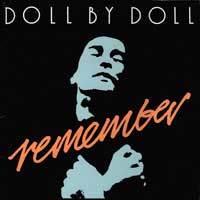 Der Name der schottischen Band kam mir zum ersten mal unter, als ich
Mitte der 80er in der Weseler StadtbĂĽcherei in alten Ausgaben der
leider dahingeschiedenen Zeitschrift Sounds schmökerte.
In den nächsten Jahren konnte ich dann alle 4 erschienenen Alben
der Band schnell in den Grabbelisten finden, da damals kaum jemand was
mit dieser Musik anfangen konnte, die fĂĽr Rock zu punkig und fĂĽr
Gothic zu poppig war. Weder Presse, noch Massenpublikum konnte damals
ĂĽberzeugt werden. Der Begriff "LadenhĂĽter" trifft
es wohl ziemlich genau!
Der Name der schottischen Band kam mir zum ersten mal unter, als ich
Mitte der 80er in der Weseler StadtbĂĽcherei in alten Ausgaben der
leider dahingeschiedenen Zeitschrift Sounds schmökerte.
In den nächsten Jahren konnte ich dann alle 4 erschienenen Alben
der Band schnell in den Grabbelisten finden, da damals kaum jemand was
mit dieser Musik anfangen konnte, die fĂĽr Rock zu punkig und fĂĽr
Gothic zu poppig war. Weder Presse, noch Massenpublikum konnte damals
ĂĽberzeugt werden. Der Begriff "LadenhĂĽter" trifft
es wohl ziemlich genau!
Das DebĂĽtalbum "Remember" ist das (punk-)rockigste davon
und erinnert in seinem Livesound mit klarer Beschränkung auf Gesang,
2 Gitarren, Bass und Schlagzeug am ehesten noch an die amerikanischen
Kollegen von Televsion: auch
hier kann man die beiden Gitarristen Jo Shaw und Jackie Leven
im Stereomix und anhand ihres Klangs und Spielstils deutlich auseinanderhalten,
wobei Shaw eher der Virtuose ist. Markenzeichen der Band ist aber vor
allem die kraftvolle Stimme von Jackie Leven, der ähnlich
wie Tim Buckley sehr hoch und sehr tief singen kann und es auch
ausgiebig tut, was sicherlich fĂĽr die Massenakzeptanz der Band
nicht förderlich war. Leven konnte seit den 90ern aber zumindest
eine bescheidene Solokarriere starten und dĂĽrfte vielleicht dem
einen oder anderen von Euch bekannt sein.
Ach ja - aus den "LadenhĂĽtern" sind inzwischen wohl
eher rare Sammlerstücke geworden. Und CD-Wiederveröffentlichungen
gibt es immer noch nicht
(23.04.2006)

 Mehr ...
Mehr ...
|
The blueprint for much of what would pass as current during the late
'70s post-punk period, that glorious moment when goth, the new romantics,
and punk itself were all lumped together under the hopelessly inadequate
banner of "new musick," Remember is not the easiest album to
listen to -- although, back in the day, it was harder still. Caught between
the absolute poles of a tuneful Pop Group and an angry blues band, with
Jackie Leven's vocals rounded enough to seem pleasant, but edged with
a rage which was discomforting regardless, Remember opens with the band's
first undisputed classic, the grinding "Butcher Boy." Vaguely
reminiscent of Television circa "Marquee Moon," but set closer
to an abattoir than a graveyard, the song packs all of Doll by Doll's
greatest strengths -- piercing guitars, tumultuous rhythms, and a nervous,
twitching danciness which leaves one in mind of an overactive stalker.
The succeeding "Chances" is more digestible -- hindsight paints
it as a clash between the Banshees' "Staircase" and something
loud by the Skids, but with a Southern rock band popping up in the mid-section,
to harmonize the listener into calm unawareness. And then "Sleeping
Partners" unearths the band's "romantic" side, and it's
back to square one. Hindsight, and subsequent developments in sonic terrorism,
have smoothed some of the edges off Remember -- indeed, a few of the lengthier
instrumental sections, and the odd unexpected vocal passage, seem even
more old-fashioned than they actually are ("More Than Human"
has a real touch of the Hall & Oates to its harmonies). Still, Remember
is a disturbingly thuggish listen, bludgeoning and battering and not even
pretending to be your friend. And Joy Division thought they were being
anti-social.
(by Dave Thompson, All
Music Guide)
|
|
| Elvis Costello "Armed Force" (Jan. 1979) |
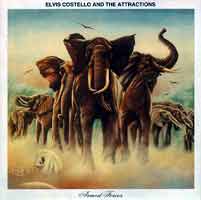 "With
the foot flat down on the accelerator, and steering a course for world
stardom, Elvis & co. made their best selling album of the pre-Warner
Brothers era. The images of travel, drink & drugs were formulated
& shaped while on the road, during which time their musical diet consisted
of tapes by David Bowie (Low & Heroes),
Iggy Pop (Idiot & Lust For Life), Abba (Greatest Hits), The Rolling
Stones (Aftermath & Between
The Buttons) & The Byrds, plus some soul and C&W." "With
the foot flat down on the accelerator, and steering a course for world
stardom, Elvis & co. made their best selling album of the pre-Warner
Brothers era. The images of travel, drink & drugs were formulated
& shaped while on the road, during which time their musical diet consisted
of tapes by David Bowie (Low & Heroes),
Iggy Pop (Idiot & Lust For Life), Abba (Greatest Hits), The Rolling
Stones (Aftermath & Between
The Buttons) & The Byrds, plus some soul and C&W."
|
| "The Roches" (Warner, Jan. 1979) |
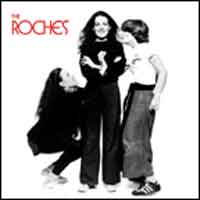 Ich liebe die Musik der Roche-Schwestern mit ihrem schaurig-schönen,
aber immer perfekten und deshalb einzigartigen Gesang! Dies ist das DebĂĽt
der Schwestern als Trio, die sich in dem Song "We" selber vorstellen
und dort fragen: "Guess Which Two Of Us Made A Record?" (Maggie
und Terre im Jahr 1975). Als Produzent
ist erstaunlicherweise Robert Fripp dabei, der mit dem späteren
King Crimson-Bassisten Tony Levin auch die Begleitband bildet.
Ich liebe die Musik der Roche-Schwestern mit ihrem schaurig-schönen,
aber immer perfekten und deshalb einzigartigen Gesang! Dies ist das DebĂĽt
der Schwestern als Trio, die sich in dem Song "We" selber vorstellen
und dort fragen: "Guess Which Two Of Us Made A Record?" (Maggie
und Terre im Jahr 1975). Als Produzent
ist erstaunlicherweise Robert Fripp dabei, der mit dem späteren
King Crimson-Bassisten Tony Levin auch die Begleitband bildet.

 Mehr ...
Mehr ...
With one of the most distinctive and diverse vocal sounds in the modern musical spectrum, the Roche sisters -- Maggie, Suzzy and Terre -- weave barbershop harmonies, traditional Irish melodies, doo-wop, bee bop and a dozen other styles into a sound wholly their own on their acclaimed 1979 release, The Roches. Featuring ten original songs written by the trio singly or in various combinations, The Roches spotlights the wry humor, subtle arrangements and consummate musical craftsmanship that has brought the group both critical and popular acclaim.
Maggie and Terre Roche first began singing together professionally in the late '60s, when both left school to pursue a musical career. In 1970, they were recruited by Paul Simon to sing backup on his best-selling LP There Goes Rhymin' Simon. Shortly thereafter, the duo released their own LP, Seductive Reasoning (1975). After relocating briefly to Louisiana, the pair appeared as a duo for the last time at the Women's Music Festival in the summer of 1976.
Suzzy Roche, who had been attending college in upstate New York, joined her sisters that same year. Now a trio, The Roches immediately earned a loyal following on the Greenwhich Village club scene, where their wide ranging musical tastes and penchant for lyric wordplay garnered critical raves. Signed to Warner Bros. Records in late 1978, they began work immediately on their debut album with renowned producer and conceptualist Robert Fripp.
The result is The Roches, produced in "Audio Verite" and featuring such standout cuts as the introductory "We," "The Married Men" (subsequently covered by Phoebe Snow), the moody "Hammond Song" and "Pretty And High."
Wer die neue Gilde der Folk-Damen von Tracy Chapman bis Tanita Tikaram bewundert, die Schwestern Roche aber noch nicht kennt, der hat einige der vergnüglichsten Hörerfahrungen noch vor sich ... vor allem der "Hammond Song" vom 1979er Debüt gehören längst zu dem Klassikern der neuen Folk Music.
(F. Schöler in Musik Express 11/88)
On the debut album, producer Robert Fripp weaves a hypnotic ambient lull through the quirky, yet grounded harmonics of Maggie, Terre and Suzzy Roche. From such beguiling (and mysteriously opaque) songs as "Hammond Song", 'The Roches' envelops a listener in a stunning pure sound.
(ROLLING STONE ALBUM GUIDE ****)
The Roches went down to Hammond, Louisiana, in 1975. Two of them: Maggie and Terre, who’d just released their first album, not yet joined by Suzzy, who would soon round out the trio. The elder two sisters had been performing for nearly a decade at that point, having first hit the road when both were fresh out of high school in Park Ridge, New Jersey, Maggie as a graduate and Terre as a senior-year dropout. Both had learned to play guitar from a public television program, quickly internalizing the dozen folk tunes the host had to offer. After that, rather than building up any standard repertoire or plugging away at fundamentals, they began focusing exclusively on developing Maggie’s original compositions, which flowed out quickly.
By the time Maggie and Terre met Paul Simon at an NYU songwriting workshop, they had an idiosyncratic sensibility as a duo, honed over years of small-time tours and local gigs at Greenwich Village folk clubs. Maggie’s songs mixed heartfelt sentiment and droll humor, plainspoken storytelling and poetic obfuscation, striking clarity of melody and knotty intricacy of form. Terre was ostensibly the lead vocalist, but in truth they were nearly always singing together, their voices entwined over their acoustic guitars. Simon, one of Maggie’s songwriting heroes, was impressed. He hired them to contribute backing vocals to his album There Goes Rhymin’ Simon, and got them a deal with Columbia, the same label that released his work.
Seductive Reasoning, released in 1975 and credited to Maggie & Terre Roche, didn’t receive much support from Columbia. The only feedback the label offered was that the sisters should wear hipper clothes. During the recording, as seasoned studio musicians played arrangements for Maggie’s songs from sheet music, “we realized that there was a whole thing that we had no idea about with music,” Terre put it to an interviewer later. They began to wonder whether their lack of musical education had left them unprepared for their fledgling new career. Two weeks after Seductive Reasoning came out, discouraged by meager sales and the label’s mishandling, Maggie and Terre resolved to quit performing entirely. They abandoned New York and its music industry for Hammond, a small college town of about 15,000 people.
“If you go down to Hammond,” all three Roches sing on their self-titled debut as a trio, released four years after that Southern sojourn, “You’ll never come back.” If you know “Hammond Song,” reading that line may be enough to conjure the miraculous sound of their harmonies in your mind. “Hammond Song” displaces the pressure Maggie and Terre felt not to leave New York, mapping it onto a family drama about a woman whose loved ones disapprove of her uprooting her life in pursuit of a man. Sometimes, the sisters inhabit different individual characters; at others, they come together in a shimmering Greek chorus.
Maggie’s lyric offers no answers about whether the woman is right or wrong to depart. The voices of her interlocutors radiate both loving concern and stifling control. You might sense, like them, that she’ll find only heartbreak in Hammond, or you might root for her leap into the unknown. The man, identified only with a dismissive “that fella,” is all but immaterial, just there to get the story moving. The heart of “Hammond Song” is the complex relationship between its protagonist and the women we can only assume are her sisters.
The arrangement illustrates those complexities as powerfully as the words do, with voices interweaving and dispersing, building chords that are first rich and sturdy, then fragile and uncertain. The writing is playful and poignant, often at the same time. “They say we meet again, on down the line,” offers Terre at one point, before a tower of voices upends the cliché: “Where is on down the line? How far away?” After the joke comes another blow to the heart. “Tell me I’m OK,” all three Roches sing together, their voices forming a delicate minor chord before spiraling downward.
While in Hammond, Maggie and Terre worked in restaurants and stayed at “a friend’s kung fu temple,” as their press coverage of the era uniformly put it, with understated puzzlement. Perhaps unsurprisingly for a bohemian martial arts institute in small-town Louisiana, it didn’t last forever. When the temple packed up six months later, the sisters did too, headed back to New York. Suzzy, their ebullient little sister, who had been 14 years old when they started performing, was now a college graduate living in the Village. She convinced her sisters to sing together again, and joined in herself, filling out the midrange between Maggie’s deep contralto and Terre’s crystalline soprano. They started by crafting elaborate vocal arrangements for Christmas carols and singing on the street. Soon, they were back in the folk clubs.
In their new trio formation, the Roches quickly caught on, eliciting a fervor that had previously eluded Maggie and Terre. Onstage, each took on a particular guise: Terre coolly charismatic; Suzzy the wild child, gyrating and pulling funny faces; Maggie the mysterious one, focused intently on the music. Maggie remained the primary songwriter, but the other two began composing as well. Along with their originals, they played a selection of covers ranging from Bob Dylan to George Frideric Handel. One newspaper reporter compared the flurry of positive press coverage to “the Bruce Springsteen hoopla in 1975.”
Mixed in with the rave notices was a sense of uncertainty of just what to do with these sisters singing painfully funny songs about workday commutes and affairs with married men in exquisite three-part harmony. Some writers insisted on reading deeply into their wardrobes—sneakers, thrift-store sweaters, peasant skirts, shorts and tights—construing these regular street clothes as evidence of coy affectation. Others sensed, in the Roches’ gleeful rejection of folk music’s po-faced past and utter indifference to prevailing trends, an affinity with the burgeoning rebellion of punk rock.
One early champion was New York Times pop critic John Rockwell, who introduced the Roches to Robert Fripp when the King Crimson guitarist asked him about bands he should see in New York. Both Fripp and the Roches had recently signed contracts with Warner Brothers, the former as a producer and the latter as an artist. After catching a performance in the Village, Fripp approached the band about working together. Both parties agreed that the goal of the sessions, in contrast to the full-band arrangements of Seductive Reasoning, should be to replicate the Roches’ stripped-down stage performance as closely as possible, with few extra elements accompanying their voices and guitars. With the exception of some well-placed washes of electronics, and an iridescent electric guitar solo on “Hammond Song,” Fripp produced the Roches in much the same way that Andy Warhol produced the Velvet Underground: by letting them be.
This fidelity to the Roches’ live setup included starting the album with “We,” their customary set opener, a disconcertingly jaunty number that introduced the band in deadpan biographical detail: “Guess which two of us made a record/Guess what the other one did instead/The two who made the record/Have been a singing group for 10 years,” and so on. In a perceptive Rolling Stone review, Ariel Swartley described the gambit of “We” as “part confrontation, part playing the klutz.” And it’s true: “We” is a sort of gauntlet, an upfront announcement that the Roches will not be bending to accommodate received notions of artistic seriousness: male notions of such seriousness, if you want to put a fine point on it. It also serves as a dare to any listener who might dismiss them as a cutesy novelty act before “Hammond Song” shows up as the second track and obliterates that possibility. It doesn’t sound remotely like punk, but it’s a punk rock move through and through.
“Hammond” wasn’t the only song on The Roches informed by Maggie and Terre’s Louisiana limbo period. There’s also “Mr. Sellack,” one of Terre’s two writing contributions, sung from the perspective of a waitress begging an old boss to rehire her at a dead-end job she left for a failed attempt at stardom. Listening to its jazzy chord changes and piquant lead guitar, it’s hard to believe that the band was ever worried about their informal musical training. (The Roches, among other things, is a top-notch guitar album, with instrumental lines that at first seem secondary but sparkle and surprise with sustained focus.) If anything, it seems that the sisters’ boldness as teenagers—their impulse to plow straight into their own material rather than spend time figuring out how other people put songs together—yielded something original and rare. Each composition on The Roches is shaped unusually, each transition from one section to the next perfectly strange.
One distinctive quality of their songs is the way a single line can shift the emotional polarity of everything in its orbit. In the case of “Mr. Sellack,” it’s the bridge, revealing the yearning beneath the greasy-spoon banality we’ve heard about so far: “Waiting tables ain’t that bad/Since I’ve seen you last/I’ve waited for some things that you would not believe/To come true.” The music bends and stretches around this admission: nudging toward a key change, picking up a couple of extra measures to accommodate all those syllables. The sisters’ phrasing and melodic lines are so graceful—shooting up to mimic the rising of the waitress’s dreams, then falling down dejected again—that the gesture sounds inevitable, almost easy, despite its irregularity. It’s as if the whole song were constructed outward from this one moment.
Lines like these abound in all three sisters’ songs, casting shadows across narratives that might otherwise seem purely whimsical. “The Troubles,” about a visit to Ireland, contrasts the sisters’ exaggeratedly petty concerns about the trip with the reality of a nation that was embroiled in brutal civil conflict. But you only hear about the second part once, and you might miss it if you’re not paying close attention. Suzzy’s “The Train” spends much of its time chronicling the unattractive excesses of an anonymous neighbor on the commuter rail: taking up two seats, drinking two beers, reading The New York Post. And then: “I want to ask him what’s his name/But I can’t because I’m so afraid.”
The Roches could be comically unsparing in their accounts of banality, another connection those early critics may have heard to the new wave of rock bands who yelped out their disenchantment with contemporary life. This was something other than folk music. There was nothing rustic about it. It was the folk music of kids who’d learned how to play guitar by watching TV. The band’s humor, and fondness for the quotidian, may have puzzled some listeners, but it was always in service of finding a deeper truth. “I think that’s kind of the nature of life, you know?” Terre told an interviewer earlier this year. “It’s not either/or it’s, and. Things are often heartbreaking and hysterically funny at the same time.”
“Damned Old Dog” is surely the saddest and sexiest song ever written with “bow wow” as a lyric. Maggie’s narrator wants to be a dog because it would make heartbreak simpler: Dogs don’t fall in love; they generally seem happy to mate with the nearest available candidate. The sisters enumerate this and various other advantages of canine life before realizing the transformation would be futile. “I don’t want to be a damned old dog,” they sing in descending harmony, sounding a bit like pre-Nashville country crooners. “I just want to lick your chin again.” At another point, their voices more closely resemble their subject’s: “Do I want to be a housebroken dog?” they ask, stretching the word “house” until it becomes the sound of three hounds howling at the moon. That’s not a metaphorical description: They literally start to sing like dogs. Somehow, it plays as much like tragedy as comedy.
If the songs of The Roches have a unifying theme, it is the idea of leaving home. Again and again, the women at their centers take courageous and possibly ill-advised plunges, sometimes landing on their feet and others on their knees, begging to be taken back. Is the message of “Hammond Song” really so ambiguous? Of course she has to go down there. If it turns out to be a mistake, it will be one that she’s made for herself.
It’s easy to see the reflections of the sisters’ own paths through life. Despite the hype around their debut, the Roches were never a huge commercial success: The Roches, their biggest-selling album, peaked at No. 58 on the Billboard albums chart. “We have a career, and that is a gift. I guess I want things to be easy, but that’s not the way it is,” Maggie told The Los Angeles Times in 1995. But you never get the sense that they regretted hitting the road as teenagers, or getting up and trying again after the record industry failed them the first time.
Terre’s song “Runs in the Family,” a devastating ballad, suggests that boldness is part of the Roche temperament, and that it isn’t always easy to live with:
- One by one we left home
- We went so far out there
- Everybody got scared
- My uncle did it; my daddy did it
- I'm beginning to think that it runs in the family
She keeps saying that—“I’m beginning to think that it runs in the family”—without ever quite saying what it is. It echoes my favorite lyric in “Hammond Song,” another one of those lines that jumps out and rearranges your feelings about everything in the story. The protagonist addresses her sisters: “I ain’t the only one who’s got this disease.” What disease? Later in “Runs in the Family,” a fight between partners leads, with a chilling lack of explanation, to a pregnancy. Who knows what sort of passion erupted in that negative space? The Roches, singing as one, seem sure that the child will be afflicted too: “Oh no, kid/You’re gonna run in the family.”
Maybe the disease is simply the urge to take a stand for yourself, and it’s only pathological because it risks being rejected, or worse, misunderstood. “Pretty and High,” the album’s elliptical closer, concerns a circus performer whose adoring public becomes convinced that she’s hiding something after she rebuffs a powerful man’s advances. They call her a liar, and claim that “if she takes off her dress/The sky will fall down.” It certainly sounds like a parable about the dangers of making art as a woman, for an audience that may turn on you as soon as you confound their expectations about womanhood.
“Call the eccentricity something else—more calculated than real, with an ingenuousness that is less than genuine,” wrote Alexander Austin and Steve Erickson in an L.A. Weekly review of a 1979 Roches performance. Women being so bold, so free, so funny—surely, they are trying to pull one over on us. They must be hiding something under their dresses.
(By Andy Cush, pitchfotk.com, Nov. 2022)
|
| Albert Lee: "Hiding" (A&M, Feb. 1979) |
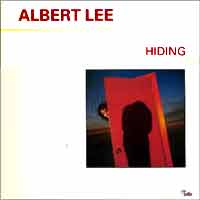 SolodebĂĽt
eines der besten Rock- und Countrygitarristen. Der Brite begann seine
Karriere bereits in den 60ern und hatte von 1968 -1972 mit Heads
Hands & Feet eine von der Kritik hoch gelobte Band, die zum falschen
Zeitpunkt am falschen Ort virtuosen Countryrock spielte und kaum Platten
verkaufte. Dann ging er nach Amerika und spielte als Nachfolger von James
Burton in Emmylou Harris´ Hot Band.
Im Gegensatz zu späteren Soloproduktionen stehen hier allerdings
die Songs im Vordergrund, wenn Lee vielleicht auch als Sänger und
Songschreiber nicht genauso begabt ist wie als Gitarrist. Einzige Eigenkomposition
ist konsequenterweise ein Remake des HH&F-Klassikers "Country
Boy", eine unglaubliche Demonstration dessen, was man so im Countrybereich
auf der Telecaster zaubern kann. Dazu kommen zwei Lieder von Chas &
Dave (Chas Hodges war damals auch bei HH&F
dabei und hat mit seinem Partner Dave Peacock ein in England erfolgreiches
Duo), drei Songs seines Hot Band-Kollegen Rodney Crowell (u.a.
der Klassiker "Ain't Livin' Long Like This" und der Country-Klassiker
"Are You Wasting My Time" der Louvin-BrĂĽder. Nur die Dire
Straits-Nummer "Setting Me Up" musste vielleicht nicht sein.
Andererseits stand die Musik Mark Knopflers damals noch nicht fĂĽr
Mainstream-Muzak. Produziert hat das ganze in Nashville der Emmylou Harris-Spezi
Brian Ahern, die komplette Hot Band ist dabei (Crowell, Hank
DeVito, Glen Hardin, John Ware, Emory Gordy,
Ricky Skaggs und sogar Emmylou Harris persönlich).
In England haben Chas&Dave ihre beiden Songs selbst produziert und
eingespielt, unterstĂĽtzt vom alten HH&F-Trommler
Pete Gavin. Eine schöne und unspektakuläre Platte ohne
Technikgefrickel. SolodebĂĽt
eines der besten Rock- und Countrygitarristen. Der Brite begann seine
Karriere bereits in den 60ern und hatte von 1968 -1972 mit Heads
Hands & Feet eine von der Kritik hoch gelobte Band, die zum falschen
Zeitpunkt am falschen Ort virtuosen Countryrock spielte und kaum Platten
verkaufte. Dann ging er nach Amerika und spielte als Nachfolger von James
Burton in Emmylou Harris´ Hot Band.
Im Gegensatz zu späteren Soloproduktionen stehen hier allerdings
die Songs im Vordergrund, wenn Lee vielleicht auch als Sänger und
Songschreiber nicht genauso begabt ist wie als Gitarrist. Einzige Eigenkomposition
ist konsequenterweise ein Remake des HH&F-Klassikers "Country
Boy", eine unglaubliche Demonstration dessen, was man so im Countrybereich
auf der Telecaster zaubern kann. Dazu kommen zwei Lieder von Chas &
Dave (Chas Hodges war damals auch bei HH&F
dabei und hat mit seinem Partner Dave Peacock ein in England erfolgreiches
Duo), drei Songs seines Hot Band-Kollegen Rodney Crowell (u.a.
der Klassiker "Ain't Livin' Long Like This" und der Country-Klassiker
"Are You Wasting My Time" der Louvin-BrĂĽder. Nur die Dire
Straits-Nummer "Setting Me Up" musste vielleicht nicht sein.
Andererseits stand die Musik Mark Knopflers damals noch nicht fĂĽr
Mainstream-Muzak. Produziert hat das ganze in Nashville der Emmylou Harris-Spezi
Brian Ahern, die komplette Hot Band ist dabei (Crowell, Hank
DeVito, Glen Hardin, John Ware, Emory Gordy,
Ricky Skaggs und sogar Emmylou Harris persönlich).
In England haben Chas&Dave ihre beiden Songs selbst produziert und
eingespielt, unterstĂĽtzt vom alten HH&F-Trommler
Pete Gavin. Eine schöne und unspektakuläre Platte ohne
Technikgefrickel. |
| Terry Reid: "Rogue Waves" (Capitol, Feb. 1979) |
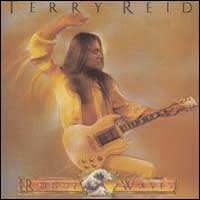 Zwar steht diese Platte schon recht Lange in meinem Plattenregal, aber
ich weiß sie erst seit kurzem zu schätzen. Der Vorläufer "Seed
Of A Memory" von 1976 war wohl nicht zuletzt wegen Produzent
Graham Nash zu einer typischen Westcoast-Singer/Songwriter-Platte
geworden, was vielen Leuten ĂĽberhaupt nicht, mir dagegen sehr gut
gefiel, nachdem ich die Scheibe in einer Grabbelkiste in den frĂĽhen
80ern gefunden hatte. In meiner damaligen Begeisterung habe ich dann auch
"Rogue Wave" in einem 2nd-Hand-Laden erstanden und war durch
die fetten und tief gestimmten Gitarren und die Phil-Spector Songs ("Baby
I Love You" in Slow Motion und Led Zeppelin-Sound mit bis zum tiefen
C herunter gestimmter E-Gitarre!) und das schrecklich-schöne Cover
doch etwas abgeschreckt. Wie fleiĂźige Leser meiner Seiten ja wissen, ist
Terry Reids Meisterwerk "River"
im vergangenen Jahr ja wieder neu aufgelegt und von mir erneut erworben
worden und kürzlich habe ich mich auch noch mal an meine alten Vinylschätze
gemacht und mir aus "Seed Of A Memory"
und "Rogue Waves" eine CDR gebastelt. Meine Erkenntnisse dabei:
Beide Alben unterscheiden sich gar nicht so sehr voneinander, wie ich
dachte: auf "Rough Waves" gibt´s zwar keine Pedal Steel,
aber doch auch schöne Akustikgitarren. Und diese für Terry Reid
typischen tief gestimmten Rhythmusgitarren sind auch schon auf "Seed..."
zu entdecken. Und beide Alben sind vor allem Dank Terrys Stimme auf ihre
Art toll. ĂĽberraschende Erkenntnis auch fĂĽr mich, dass diese
extrem tiefen Heavy-Gitarren offensichtlich keine Erfindung dieser dämlich
Nu-Metalls mit ihren halbhohen Hosen und Baseball-Käppis sind!
Zwar steht diese Platte schon recht Lange in meinem Plattenregal, aber
ich weiß sie erst seit kurzem zu schätzen. Der Vorläufer "Seed
Of A Memory" von 1976 war wohl nicht zuletzt wegen Produzent
Graham Nash zu einer typischen Westcoast-Singer/Songwriter-Platte
geworden, was vielen Leuten ĂĽberhaupt nicht, mir dagegen sehr gut
gefiel, nachdem ich die Scheibe in einer Grabbelkiste in den frĂĽhen
80ern gefunden hatte. In meiner damaligen Begeisterung habe ich dann auch
"Rogue Wave" in einem 2nd-Hand-Laden erstanden und war durch
die fetten und tief gestimmten Gitarren und die Phil-Spector Songs ("Baby
I Love You" in Slow Motion und Led Zeppelin-Sound mit bis zum tiefen
C herunter gestimmter E-Gitarre!) und das schrecklich-schöne Cover
doch etwas abgeschreckt. Wie fleiĂźige Leser meiner Seiten ja wissen, ist
Terry Reids Meisterwerk "River"
im vergangenen Jahr ja wieder neu aufgelegt und von mir erneut erworben
worden und kürzlich habe ich mich auch noch mal an meine alten Vinylschätze
gemacht und mir aus "Seed Of A Memory"
und "Rogue Waves" eine CDR gebastelt. Meine Erkenntnisse dabei:
Beide Alben unterscheiden sich gar nicht so sehr voneinander, wie ich
dachte: auf "Rough Waves" gibt´s zwar keine Pedal Steel,
aber doch auch schöne Akustikgitarren. Und diese für Terry Reid
typischen tief gestimmten Rhythmusgitarren sind auch schon auf "Seed..."
zu entdecken. Und beide Alben sind vor allem Dank Terrys Stimme auf ihre
Art toll. ĂĽberraschende Erkenntnis auch fĂĽr mich, dass diese
extrem tiefen Heavy-Gitarren offensichtlich keine Erfindung dieser dämlich
Nu-Metalls mit ihren halbhohen Hosen und Baseball-Käppis sind!
(05.03.2005)

 Mehr ...
Mehr ...
|
When this album came out, in the middle of the punk and disco booms,
it seemed like a breath of fresh air, a stomping mix of heavy metal and
soul, filled with engaging originals by Reid and spiced by heavy-handed
but bracing versions of harmony-based numbers like "Baby I Love You,"
"Then I Kissed Her," "Walk Away Renee," and "All
I Have To Do Is Dream." Today, they don't hold up so well, and the
album seems a bit over-the-top, overdone, and excessive. Doug Rodrigues
and Reid share guitar chores, and the best parts of their playing are
the softest moments. The backing vocals by Denise Williams, Dyanne Chandler,
and Maxine Willard are often ravishing, and Reid's singing is as powerful
as ever -- it all just seems a bit arch and artificial, perhaps because
of the way-too-close bass and drum sound, and the too-heavy guitar; that
works for blues, as Led Zeppelin proved most of the time, but it makes
for some distinctly unsubtle R&B.
(by Bruce Eder, All
Music Guide)
|
|
| Graham Parker & The Rumour: "Squeezing Out Spark" (Vertigo, März 1979) |
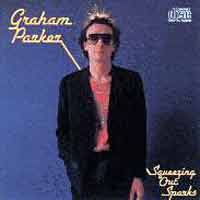 Dieses
vierte Studioalbum wird allgemein als sein bestes eingeschätzt -
meiner Meinung nach sind aber alle ziemlich gut, sodass es fĂĽr mich
mĂĽĂźig ist, da noch Unterschiede zu machen. Sicherlich ist die
Produktion Dank Jack Nietzsche wunderbar - meine Lieblingssongs
sind aber auf den anderen drei Alben. Dieses
vierte Studioalbum wird allgemein als sein bestes eingeschätzt -
meiner Meinung nach sind aber alle ziemlich gut, sodass es fĂĽr mich
mĂĽĂźig ist, da noch Unterschiede zu machen. Sicherlich ist die
Produktion Dank Jack Nietzsche wunderbar - meine Lieblingssongs
sind aber auf den anderen drei Alben. |
| Rickie Lee Jones (Warner, April 1979) |
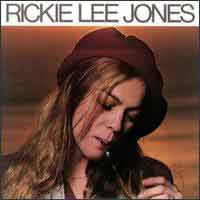 Das
beeindruckende Debüt der Sängerin, Songschreiberin, Pianistin
und gelegentlichen Gitarristin aus dem Umfeld von Tom Waits. Die
Meisten dĂĽrften vor allem den Song "Chuck E's In Love"
kennen. Das
beeindruckende Debüt der Sängerin, Songschreiberin, Pianistin
und gelegentlichen Gitarristin aus dem Umfeld von Tom Waits. Die
Meisten dĂĽrften vor allem den Song "Chuck E's In Love"
kennen.

 Mehr ...
Mehr ...
With her expressive soprano voice employing sudden alterations of volume and force, and her lyrical focus on Los Angeles street life, Rickie Lee Jones comes on like the love child of Laura Nyro and Tom Waits on her self-titled debut album. Given the population of colorful characters who may or may not be real people that populate her songs -- Chuck E., Bragger, Kid Sinister, and others -- she also might have had Bruce Springsteen in her bloodline (that is, the Springsteen of his first two albums), and her jazzbo sensibility suggests Mose Allison as a grandfather. Producers Lenny Waronker and Russ Titelman, who know all about assisting quirky singer/songwriters with their visions, have brought in a studio full of master session musicians, many of them with jazz credentials, and apparently instructed them to follow Jones' stop-and-start, loud-and-soft vocalizing, then overdubbed string parts here and there. The music thus has a sprung rhythmic feel that follows the contours of Jones' impressionistic stories about scuffling people on the streets and in the bars. There is an undertow of melancholy that becomes more overt toward the end, as the narrator's friends and lovers clear out, leaving her "Standing on the corner/All alone," as she sings in the final song, "After Hours (Twelve Bars Past Goodnight)." It's a long way, if only 40 minutes or so, from the frolicsome opener, "Chuck E.'s in Love," which had concluded that he was smitten by "the little girl who's singin' this song." But then, the romance of the street is easily replaced by its loneliness. Rickie Lee Jones is an astounding debut album that simultaneously sounds like a synthesis of many familiar styles and like nothing that anybody's ever done before, and it heralds the beginning of a potentially important career.
(by William Ruhlmann, All Music Guide)
|
| Lowell George: "Thanks I'll Eat It There" (Warner, April 1979) |
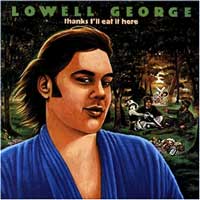 Unterbewertetes
DebĂĽt des ehemaligen Little Feat-Bandleaders. Unterbewertet
vielleicht deshalb, weil das Album sehr kurz ist (knapp 30 Minuten) und
neben einigen Coversongs (z.B. "What Do You Want The Girl To Do"
von Allen Toussaint, "I Can´ Stand The Rain" von
Ann Peebles und "Easy Money" aus der Feder von Rickie
Lee Jones, ebenfalls zu finden auf deren fast zeitgleich erschienenem
DebĂĽtalbum) und einer Neuauflage des Featklassikers
"Two Trains" vomn "Dixie
Chicken"-Album) nur wenig neues Eigenmaterial des gerade als
Songschreiber so hoch verehrten Slidegitarristen bringt. Kurz nach Veröffentlichung
des Albums verstirb George mit Mitte 30 an Herzversagen: somit ist dieses
Debüt auch gleichzeitig das Vermächtnis eines der besten Rock-Songschreiber.
AuĂźerdem stelle ich zumindest aus der Distanz der Jahre fĂĽr mich
fest: eigentlich ein sehr schönes Album! Unterbewertetes
DebĂĽt des ehemaligen Little Feat-Bandleaders. Unterbewertet
vielleicht deshalb, weil das Album sehr kurz ist (knapp 30 Minuten) und
neben einigen Coversongs (z.B. "What Do You Want The Girl To Do"
von Allen Toussaint, "I Can´ Stand The Rain" von
Ann Peebles und "Easy Money" aus der Feder von Rickie
Lee Jones, ebenfalls zu finden auf deren fast zeitgleich erschienenem
DebĂĽtalbum) und einer Neuauflage des Featklassikers
"Two Trains" vomn "Dixie
Chicken"-Album) nur wenig neues Eigenmaterial des gerade als
Songschreiber so hoch verehrten Slidegitarristen bringt. Kurz nach Veröffentlichung
des Albums verstirb George mit Mitte 30 an Herzversagen: somit ist dieses
Debüt auch gleichzeitig das Vermächtnis eines der besten Rock-Songschreiber.
AuĂźerdem stelle ich zumindest aus der Distanz der Jahre fĂĽr mich
fest: eigentlich ein sehr schönes Album! |
| Ian Hunter: "You're Never Alone With A Schizophrenic" (Chrysalis, Mai 1979) |
 Allein
schon wegen des Titels gehört das Album hier hin. Ian Hunter (Ex-Mott
The Hoople) mit seinem Kumpel Mick Ronson (Ex-David Bowie
Band) in Höchstform. Hat im Rockpalast damals kaum jemand verstanden. Allein
schon wegen des Titels gehört das Album hier hin. Ian Hunter (Ex-Mott
The Hoople) mit seinem Kumpel Mick Ronson (Ex-David Bowie
Band) in Höchstform. Hat im Rockpalast damals kaum jemand verstanden. |
| Patti Smith Group: "Wave" (Arista, Mai 1979) |
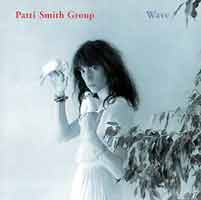 Das letzte einer grandiosen Reihe von Alben der Band aus den 70ern. Es
enthält zwei geniale eigene Songs ("Dancing Barefoot" und
"Frederick"), sowie eine tolle Coverversion: "So You Wanna
Be A Rock'n'Roll Star" von den Byrds.
Produziert von Todd Rundgren.
Das letzte einer grandiosen Reihe von Alben der Band aus den 70ern. Es
enthält zwei geniale eigene Songs ("Dancing Barefoot" und
"Frederick"), sowie eine tolle Coverversion: "So You Wanna
Be A Rock'n'Roll Star" von den Byrds.
Produziert von Todd Rundgren.

 Mehr ...
Mehr ...
The Patti Smith Group's most conventional album, Wave was given a bright pop/rock sound by producer Todd Rundgren. It was the last album Smith made before marrying and retiring from record-making for nine years, and it can be heard as a farewell to the music business, from "Frederick," the love song to her husband-to-be, Fred "Sonic" Smith, that leads it off, to the version of "So You Want to Be (A Rock 'n' Roll Star)," among the most bitter accounts of fame on record. But Smith also achieves a sense of charm and sincerity on Wave that she hadn't even attempted on her earlier albums, even to the point of her imagined small-talk encounter with the late Pope John Paul I on the title track. Still, the overall mediocre quality of the material makes this the slightest of Smith's efforts.
(by William Ruhlmann, All Music Guide)
|
| Nick Lowe: "Labor Of Lust" (Radarscope, Juni 1979) |
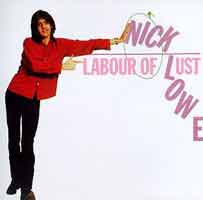 Das
zweite Album des Ex-Brinsley Schwarz-Bassisten
war wiederum ein verkapptes Rockpile-Album
(Lowe mit Dave Edmunds, Billy Bremner und Terry Williams),
wieder mit klasse Songs, z.B. "Cruel To Be Kind" (von Nick Lowe
und dem alten Brinsley-Kollegen Ian Gomm) und "Switchboard
Susan" (von Mickey Jupp). Das
zweite Album des Ex-Brinsley Schwarz-Bassisten
war wiederum ein verkapptes Rockpile-Album
(Lowe mit Dave Edmunds, Billy Bremner und Terry Williams),
wieder mit klasse Songs, z.B. "Cruel To Be Kind" (von Nick Lowe
und dem alten Brinsley-Kollegen Ian Gomm) und "Switchboard
Susan" (von Mickey Jupp). |
| Emmylou Harris: "Blue Kentucky Girl" (Warner, Juni 1979) |
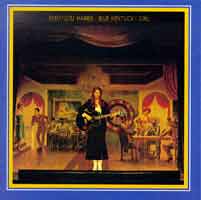 Emmylou
war damals ein Garant fĂĽr hochklassige Alben. Auch dieses mal sorgte
dafĂĽr ihr Gesang, die tolle Begleitung durch die Hot Band (u. a.
Albert Lee, Rodney Crowell, James Burton, Glenn
D.Hardin und Ricky Skaggs) und das wunderbare Songmaterial,
u.a. "Hickory Wind" (Byrds-Klassiker von Gram Parsons), "Even
Cowgirls Get The Blues" (Rodney Crowell) und "Save The Last
Dance For Me" (Mort Shuman, Doc Pomus). Emmylou
war damals ein Garant fĂĽr hochklassige Alben. Auch dieses mal sorgte
dafĂĽr ihr Gesang, die tolle Begleitung durch die Hot Band (u. a.
Albert Lee, Rodney Crowell, James Burton, Glenn
D.Hardin und Ricky Skaggs) und das wunderbare Songmaterial,
u.a. "Hickory Wind" (Byrds-Klassiker von Gram Parsons), "Even
Cowgirls Get The Blues" (Rodney Crowell) und "Save The Last
Dance For Me" (Mort Shuman, Doc Pomus). |
| Ry Cooder: "Bop Till You Drop" (Warner, Aug. 1979) |
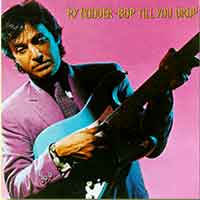 "Digitally
recorded in 1979, Bop Till You Drop was the first album made that way.
But that's not why it's here. No, Ry Cooder has simply been one of the
best guitar players and mood setters around for the last thirty years.
(Thirty years?!? Help!) Discarding flash for taste, that´s his way.
And he´s played with some of the finest: Rolling Stones, Captain
Beefheart, Taj Mahal, to name but a few. Always giving them the diamonds
in the dirt. Bop Till You Drop is one of his finest solo moments. He´s
joined by, among others, David Lindley (he will probably be featured here
by himself one day) and Jim Keltner (purveyor of the understated groove,
thus the perfect drummer in this setting). And - of course - Ry Cooder´s
taste is also evident in the choice of material. From blues to gospel
to pop to teenage angst and back." "Digitally
recorded in 1979, Bop Till You Drop was the first album made that way.
But that's not why it's here. No, Ry Cooder has simply been one of the
best guitar players and mood setters around for the last thirty years.
(Thirty years?!? Help!) Discarding flash for taste, that´s his way.
And he´s played with some of the finest: Rolling Stones, Captain
Beefheart, Taj Mahal, to name but a few. Always giving them the diamonds
in the dirt. Bop Till You Drop is one of his finest solo moments. He´s
joined by, among others, David Lindley (he will probably be featured here
by himself one day) and Jim Keltner (purveyor of the understated groove,
thus the perfect drummer in this setting). And - of course - Ry Cooder´s
taste is also evident in the choice of material. From blues to gospel
to pop to teenage angst and back." |
| Van Morrison: "Into The Music" (Mercury, Aug. 1979) |
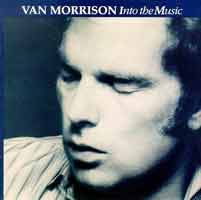 Nachdem
die beiden zuvor erschienenen Alben "A
Period Of Transision" (1977) und "Wavelength" (1978)
etwas untergingen, war er mit diesem Album wieder voll da. Mit David
Hayes (bg), Mark Jordan (keyb), Mark Isham (tp), Pee
Wee Ellis (sax), Peter van Hooke (dr), Herbie Armstrong
(g) und Katie Kissoon (voc) hatte er eine neue Band um sich versammelt,
die bei den Konzerten der nächsten Jahre noch glänzen würde.
Als Gäste sind u.a. Ry Cooder, Tablaspieler Zakir
Hussain (Shakti?) und der lang verschollene Robin Williamson
(Ex-Incredible String Band) dabei.
Von den Liedern seien vor allem "Bright Side Of The Road", "Full
Force Gale", "You Make Me Feel So Free" und die einzige
Coverversion "It´s All In The Game" hervorgehoben. Nachdem
die beiden zuvor erschienenen Alben "A
Period Of Transision" (1977) und "Wavelength" (1978)
etwas untergingen, war er mit diesem Album wieder voll da. Mit David
Hayes (bg), Mark Jordan (keyb), Mark Isham (tp), Pee
Wee Ellis (sax), Peter van Hooke (dr), Herbie Armstrong
(g) und Katie Kissoon (voc) hatte er eine neue Band um sich versammelt,
die bei den Konzerten der nächsten Jahre noch glänzen würde.
Als Gäste sind u.a. Ry Cooder, Tablaspieler Zakir
Hussain (Shakti?) und der lang verschollene Robin Williamson
(Ex-Incredible String Band) dabei.
Von den Liedern seien vor allem "Bright Side Of The Road", "Full
Force Gale", "You Make Me Feel So Free" und die einzige
Coverversion "It´s All In The Game" hervorgehoben. |
| XTC: "Drums And Wires" (Virgin, Aug. 1979) |
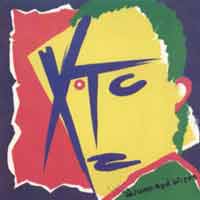 XTC wurden anfangs als Punkrocker verkauft. Das lag vielleicht daran,
dass sie 1977/78 in der Londoner Szene erstmals in Erscheinung traten
und auf ihrem ersten Album ("White Music"?) durchaus die rohe
Energie einer Punkband zeigten. Mit den folgenden Alben wurde aber immer
deutlicher, dass die Band um den Sänger, Gitarristen & Songschreiber(90%)
Andy Partridge und den Sänger, Bassisten & Songschreiber(10%)
Colin Moulding eher ihr Vorbild in den Beatles hatte. Auf diesem
Album findet man einen ihrer größten Hits "Making Plans
For Nigel", ausnahmsweise von Moulding komponiert.
XTC wurden anfangs als Punkrocker verkauft. Das lag vielleicht daran,
dass sie 1977/78 in der Londoner Szene erstmals in Erscheinung traten
und auf ihrem ersten Album ("White Music"?) durchaus die rohe
Energie einer Punkband zeigten. Mit den folgenden Alben wurde aber immer
deutlicher, dass die Band um den Sänger, Gitarristen & Songschreiber(90%)
Andy Partridge und den Sänger, Bassisten & Songschreiber(10%)
Colin Moulding eher ihr Vorbild in den Beatles hatte. Auf diesem
Album findet man einen ihrer größten Hits "Making Plans
For Nigel", ausnahmsweise von Moulding komponiert.

 Mehr ...
Mehr ...
Following Go 2, keyboardist Barry Andrews left XTC and, rather than finding a replacement keyboard player, the band opted to recruit another guitarist (who could also play keyboards), Dave Gregory. The album that followed the lineup change, Drums and Wires, marks a turning point for the band, with a more subdued set of songs that reflect an increasing songwriting proficiency. The aimless energy of the first two albums is focused into a cohesive statement with a distinctive voice that retains their clever humor, quirky wordplay, and decidedly British flavor. Musically, Drums and Wires, titled to reflect the big drum sound they developed for the album, is certainly driven by the powerful rhythms and angular, mainly minimalistic arrangements, but the addition of a second guitarist also allows for some inventive and interesting guitar work (the "wires") that made up for the lack of Andrews' odd flourishes — the tension between the two sounds creates some truly inspired, nervy pop. Colin Moulding also comes into his own as a songwriter, penning XTC's first substantial hit, the new wave classic "Making Plans for Nigel."
|
| Karla Bonoff: "Restless Nights" (Columbia, Sept. 1979) |
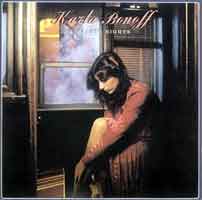 Mit ihrem zweiten Album liefert uns die Songschreiberin und Sängerin
wieder entspannten Westcoast-Pop und wieder wird es nichts mit dem groĂźen
Durchbruch. Immerhin kann sich Linda Ronstadt
hier wieder bedienen: sie wird einige Jahre später die beiden Titel
"Trouble Again" und "All My Life" auf ihrem Duettalbum
mit Aaron Neville covern. Produziert hat ihr Mitstreiter aus alten
Bryndle-Tagen und aktueller Linda Ronstadt-Begleiter Kenny Edwards.
Die Band Bryndle ist ein gut gehĂĽtetes Geheimnis der Westcoastszene:
es reichte damals zwar nicht zum eigenen Album, aber alle Mitglieder machten
danach als Solisten Karriere. Neben Karla und Kenny waren das noch Andrew
Gold und Wendy Waldman.
Mit ihrem zweiten Album liefert uns die Songschreiberin und Sängerin
wieder entspannten Westcoast-Pop und wieder wird es nichts mit dem groĂźen
Durchbruch. Immerhin kann sich Linda Ronstadt
hier wieder bedienen: sie wird einige Jahre später die beiden Titel
"Trouble Again" und "All My Life" auf ihrem Duettalbum
mit Aaron Neville covern. Produziert hat ihr Mitstreiter aus alten
Bryndle-Tagen und aktueller Linda Ronstadt-Begleiter Kenny Edwards.
Die Band Bryndle ist ein gut gehĂĽtetes Geheimnis der Westcoastszene:
es reichte damals zwar nicht zum eigenen Album, aber alle Mitglieder machten
danach als Solisten Karriere. Neben Karla und Kenny waren das noch Andrew
Gold und Wendy Waldman. |
| Ian Matthews: "Siamese Friends" (Rockburgh, Sept. 1979) |
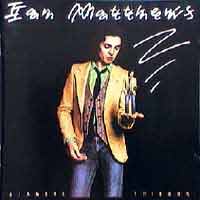 Mit dieser relativ rockigen/poppigen Produktion habe ich Ian Matthews damals
wieder fĂĽr mich entdeckt. Zwar befinden sich unter den 10 Liedern
5 gute Eigenkompositionen, beeindruckend sind aber (wie immer) sein Talent
bei origineller Auswahl und geschmackssicherer Interpretation der Songs
anderer Autoren: diesmal sind das u. a. "Anna" von John Martyn,
"Home Somewhere" von Jules Shear, "Crying In The
Night" von Stevie Nicks (Fleetwood Mac) und "Baby´s
On The Street" von Jona Lewie.
Mit dieser relativ rockigen/poppigen Produktion habe ich Ian Matthews damals
wieder fĂĽr mich entdeckt. Zwar befinden sich unter den 10 Liedern
5 gute Eigenkompositionen, beeindruckend sind aber (wie immer) sein Talent
bei origineller Auswahl und geschmackssicherer Interpretation der Songs
anderer Autoren: diesmal sind das u. a. "Anna" von John Martyn,
"Home Somewhere" von Jules Shear, "Crying In The
Night" von Stevie Nicks (Fleetwood Mac) und "Baby´s
On The Street" von Jona Lewie.

 Mehr ...
Mehr ...
|
Saddled with late-'70s production techniques, there is nothing, on the surface, to recommend this record. A close look at the songwriting credits, though, will reveal a beginning of Matthews's fascination with the work of great Jules Shear. (Matthews would later do an entire album of Shear's songs). Still, even this track is burdened by a cheesy David Sanborn-style sax line.
(by Brett Hartenbach, All Music Guide)
|
|
| Doll By Doll: "Gypsy Blood" (WEA/Automatic, Okt. 1979) |
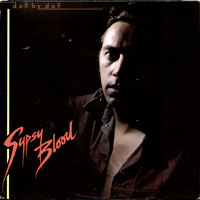 Aus der Gitarrenband von Jahresanfang (DebĂĽtalbum "Remember")
ist inzwischen eine Popband geworden, ohne dabei Kraft einzubĂĽĂźen,
denn die Songs sind noch viel besser als beim ersten Versuch. Gelegentlich
kommen jetzt sogar Gastmusiker an Geige und Pedalsteel zum Zuge. Zwei
Lieder auf Seite A ("Strip Show" und "The Human Face")
könnten diese Platte zu meiner Lieblinxplatte des Jahres machen,
wenn nicht auf der B-Seite ein paar bescheuerte Effekte auf die Gesangsstimme
von Jackie Leven gelegt worden wären, die diese überhaupt
nicht nötig hätte. In diesen Momenten klingt's so furchtbar
wie bei Neil Youngs "Hawks
& Doves" (wenn Ihr wisst, was ich meine!), aber der Rest
der Platte ist grandios. Für mich unerklärlich, warum die Platte
kein Meilenstein der Rockgeschichte wurde. Ich schätze mal: "Right
Band, Wrong Time"!!!
Aus der Gitarrenband von Jahresanfang (DebĂĽtalbum "Remember")
ist inzwischen eine Popband geworden, ohne dabei Kraft einzubĂĽĂźen,
denn die Songs sind noch viel besser als beim ersten Versuch. Gelegentlich
kommen jetzt sogar Gastmusiker an Geige und Pedalsteel zum Zuge. Zwei
Lieder auf Seite A ("Strip Show" und "The Human Face")
könnten diese Platte zu meiner Lieblinxplatte des Jahres machen,
wenn nicht auf der B-Seite ein paar bescheuerte Effekte auf die Gesangsstimme
von Jackie Leven gelegt worden wären, die diese überhaupt
nicht nötig hätte. In diesen Momenten klingt's so furchtbar
wie bei Neil Youngs "Hawks
& Doves" (wenn Ihr wisst, was ich meine!), aber der Rest
der Platte ist grandios. Für mich unerklärlich, warum die Platte
kein Meilenstein der Rockgeschichte wurde. Ich schätze mal: "Right
Band, Wrong Time"!!!
(25.04.2006)

 Mehr ...
Mehr ...
|
Doll by Doll: Post Punk's Bleeding Hearts
"...a story is a narrative of events arranged in a time sequence."
-- E.M. Forster
"'I think we should try to be more open.' More clear as well: more
frank and more clear; two things that don't always go together."
-- Maurice Blanchot
It's already deep in the ether, as gone as these things can be. No matter
what remains hidden somewhere on tape, or the recorded artifacts on scarce
12" record albums, the music itself has long since passed on into
pop's obscure historical memory.
Doll by Doll was a much reviled Scottish rock & roll band who staggered
onto the U.K. scene during the post-punk era. They made deliberately complex
music that combined '50s rock & roll, anthemic girl group choruses,
hardscrabble Northern soul, over-amped guitars, tumultuous shifting rhythms,
danced-out bridges, spoken and sung poetry, Springsteen -esque dynamics,
punk fury, theatrical narratives, and a sense of fallen, damaged beauty,
drama, and pathos that could only be realized by excess and be greeted
by confusion, hostility, and nearly wholesale indifference.
Fronted by songwriter, vocalist, and guitarist Jackie Leven with pals
Jo Shaw on guitar, David McIntosh on drums, and Robin Spreafico on bass
-- the latter later replaced by Tony Waite, who also produced the band's
first through third albums -- Doll by Doll showed up to London's downer
party unannounced -- and paid dearly for it in the Brit music tabloids.
Doll by Doll recorded four albums, two for Automatic -- Remember and
Gypsy Blood (both 1979) -- and two for Magnet -- Doll by Doll (also released
in the U.S. on MCA in 1980) and Grand Passion (1982), by which time Leven
was the only remaining member.
Leven, who carried his lyrical excesses into a marginal solo career,
wrote songs that employed the poetry of Antonin Artaud ("Human Face"
on Gypsy Blood), Anna Akhmatova, T.S. Eliot, and his own sense of near
Shakespearean tragedy to a music mix that seemed like it had heard and
incorporated everything, like a snowball rolling downhill only to splatter
with all of its acquired detritus: Television, Joy Division, Buzzcocks,
Roy Orbison, Wilson Pickett, Marvin Gaye, the Shirelles, Ronettes, Scott
Walker, Charles Aznavour, and Jacques Brel to name but a few.
The debut offering, Remember, was a hint at what was coming from
this quartet. With a silhouette of Artaud as Jean Paul Marat from the
play Marat-Sade, it became the band's symbol -- they picked up something
from Malcolm McLaren's loopy Situationist branding ideas, after all. Far
more conventional than its successive recordings, it stuck close to the
time period's formulas, but Leven's voice could alternately move from
the bottom of a mellifluous baritone to a crystalline falsetto without
a seam. It stood outside time, outside space, and certainly outside the
purposely unmusical zeitgeist of the era. (Who would have thought something
so "inside" could be art brut?) Here he sings surrealistic,
autobiographical street tales of haunted, doomed love, crumbling empires,
and a ruined hope that could only live in the heart of a damned man. His
voice soared above the din of his and Shaw's dueling, detuned scraping
guitars, floppy low-end basslines, and skittering drums. Thudding kick
drums and sparkling snares were juxtaposed against cymbals that sounded
more like gongs vying for the top spot with Leven and Spreafico. All but
the vocals and silences were recorded in the red. The Brit journalist
mob -- with notable exceptions like Barney Hoskyns and Nick Kent -- were
intrigued but deeply skeptical as well.
Doll by Doll's live reviews in Sounds were equally troubled, wondering
just what the hell was going on with this band who dared play in a London
that was so vital between 1974 and 1983, chock-full of Oi! bands, doomy
goth acts, a new wave of distinctly British pop, the ska revival, deep,
dub-style heavy reggae, the more warlike sounds of Killing Joke and their
mirrored antithesis, Public Image Ltd., the fractured funk of the Pop
Group, Gang of Four, and A Certain Ratio, and the art rock of Wire. In
performance, this gang of Scots played a full-on arena-in-their-basement
style of rock & roll; their songs had everything to do with the acceptance
of redemption in all its guises -- even for the emotionally damaged, even
if it were only attained in death -- and nothing to do with the dour,
sullen politics or creeping interior paranoia and bleak futurism that
drenched the songs of the period. Doll by Doll didn't give a damn about
Thatcherism, nuclear destruction, or Northern Ireland. What Doll by Doll
offered was a sense of tarnished, fragile beauty that was anchored in
masculine anger and confusion. This band had a set of peers working unknowingly
at the same time, whose first album was also dissed: Ireland's Virgin
Prunes and their New Form of Beauty releases and debut album, If I Die,
I Die, issued early in 1982.
It was Gypsy Blood that turned the corner and set the band over
the edge of the abyss with critics. Their mild distrust and curiosity
became ire and rage. The album, however, is Doll by Doll's enduring masterpiece.
It opens with "Teenage Lightning," all thundering drums and
edgy guitars followed by Leven's triple-tracked vocals along with the
entire band singing backup in seven-part harmony behind him: "If
you go walking in the street today/Make sure you listen to what the young
boys say/They know the color of speed is red/You don't become a hero until
you're dead/They don't want to hear no hard luck story/About the rise
and fall of love/There is no Starman watching from above." The harmonies
were so rich, they extended out as branches from pop's golden era -- the
Beach Boys in the mid-'60s (and Leven could do 12 vocal tracks in one
sitting like Brian Wilson did) -- and broke off somewhere past everything
that was happening in 1981. The disc pointed forward in a way that didn't
deny history but incorporated it in a gorgeous overreach. This was pure,
unabashed romanticism that combined Phil Spector-ish doo-wahs with punk's
overwrought fury, French Symbolism, and soul and new wave dance beats.
But the worst offense of all to the critics was that the album
was completely unapologetically melodic without irony. Nick Lowe, Elvis
Costello, and Squeeze could be accepted because they employed craft along
with wit and sarcasm, but Doll by Doll was serious. It was a mess, but
a tightly organized disorder that sprawled across rock's past and pointed
to the future. Worse, the title track, which immediately followed, began
with a Rhodes piano playing a jazz riff (which sounded like Georgie Fame
but was Shaw) that was countered by McIntosh's careening snare and Leven
singing a doo wop intro with lyrics that went straight to the street corners
of the Glaswegian night portrayed so nightmarishly in the novel Trainspotting:
"I'll tell you this, John boy, I'm not so green/I was married before
I was 16/Rings on the fingers of speech/I feel out of reach/Born a prisoner
on Skull Beach/Gypsy blood...'Love burns in the heart of the master/He,
seeing only God in everything/With the white flame of worship purges/It
of all fancied imperfection'/I got the answer to everything: the last
romance is/A sky that is lost in my heart." The inner quote is from
Hafiz, a Sufi mystic poet -- long before new age folks were raving about
Rumi.
Yet it wasn't just these two songs; the album's sides were jacked into
a tense battle with one another. First, there are the sacred and the profane,
inseparably identified with love on the album's finest tracks: "Stripshow,"
"Human Face" (the title and first verse a translated quote from
Artaud: "The human face is an empty power/It is a field of death/The
last thing that's left to me now is the love of the love of my own breath"
-- before Leven starts sweetly singing of switchblades, Jesus weeping,
and romantic love), and "Hey Sweetheart." Side two commences
its engagement with forces beyond sight and perhaps sense as well, the
Licht und Blindheit of Joy Division's "Atmosphere," in a suite
of songs. Shaw's "Binary Fiction," an angular, dissonant walk
along the edges of outer darkness, followed by Leven's "Hell Games,"
which delves into the spiritual without reserve, as if to call the cosmos
of Shaw's tune out for a showdown, and does in the squalling harmonics
of "Forbidden Worlds." The seeming respite in "Highland
Rain" is a deception. It echoes a folk ballad revved just enough
to make it rock, but it is a rock rune instead. Lyrically, it's full of
pastoral settings, contrasted with violence: "bashed hearts and...smashed
knuckles." The final trio of tunes leaves the listener dazed, wondering
how the band got from side one's urban reality and spiritual love to side
two's steely-eyed cosmic questions that pummel the body and mind into
submission and acceptance of its frailty. The album's final track is a
mildly dissonant, classically themed short piece. It's Leven singing a
translation of the great Russian poet Anna Anna Akhmatova's "When
a Man Dies." Trouser Press' Ira Robbins and Touch & Go fanzine's
Tesco Vee (also of the notorious Meatmen) were the only Americans to get
Gypsy Blood, though Claude Bessy (aka Kickboy Face) -- a German critic
and musician living in Los Angeles -- did, too, in the belated Slash.
Doll by Doll's strident, fierce-hearted pursuit of the romantic, the
elegance of the sung language, and the unwavering embrace of rock's myriad,
loopy history brought the fury of all that was held anti-sacred down on
the band's head. They never recovered. It took another two years and a
legal battle to get out of their contract with Automatic. When they re-emerged
on Magnet in 1980, the band was different yet somehow the same. In the
ensuing two years, Doll by Doll responded to the critical (and sometimes
physical) attacks with more touring just to stay afloat. When their self-titled
album did appear, it was from a band who looked only at romantic love
from all sides and tossed the rest. The sonic attack was toned down, more
acoustic instruments appeared, from mandolins to congas to an Oberheim
-- and loads of backing singers. It was lush, chock-full of soul references
and picturesque street scenes. Doll by Doll walked completely away from
the edges of the post-punk abyss to embrace Leven's difficult, ever-tarnished
romanticism, which was equal parts disappointment and brokenness, and
redemptive optimism. The opening track, "Figure It Out," could
have been recorded by Springsteen's E Street Band with Leven fronting
them. The album's second single, "Caritas," was an out-and-out
funk tune, complete with Nile Rodgers-style handclaps (which were de rigueur
at the time). Leven's lyrics were pure pop poetry this time, and the onslaught
of backing tracks and singers sounding like a gospel choir underscored
them. The album's key moment is "Main Traveled Roads"; it pays
undisguised tribute to the band's Celtic/Scottish folk roots, and shoves
them up against the warrior soul poetics of Japanese author and madman
Yukio Mishima in a direct lyrical quote.
The album was issued by MCA and deleted shortly thereafter; it
received no promotion even in a place where it might have been embraced.
It was ignored in both the United Kingdom and America. Completely. It
was another two years before the name Doll by Doll emerged again. This
time, only Leven remained with vocalist and keyboardist Helen Turner (later
of the Style Council and Paul Weller's solo albums) and a star-studded
cast that included Pink Floyd guitarist David Gilmour, saxophonist Mel
Collins, Tim Cross, Maggie Reilly, Graham Broad (of the Edgar Broughton
Band no less), and Tom Newman. There are moments here, and Leven's lyrics
remain top-notch. The compositions themselves have style and grace, but
the performance is decidedly lackluster. Turner's singing paled in comparison,
and since she dueted on virtually every track, the strain on the listener
becomes tiresome because there is no musical fury to answer to and the
voices simply don't match up. The band of hired guns offered no tension,
no fire. And nowhere is this borne out with more disappointment than on
the album's single, a cover of the Rolling Stones' "Under My Thumb."
The sheer thinness of the production, the haphazard phrasing of the singers,
and the competent but rather boring instrumentation sink the Doll by Doll
name into the obscurity from which it rose.
Leven has had an aesthetically brilliant but marginally successful solo
career and has made recordings with everyone from Eddi Reader, Mike Scott,
and David Thomas to author Ian Rankin. Doll by Doll has reunited on-stage
in Germany and Scotland, though they haven't recorded together.
The point of this saga is a question of timing. Had Doll by Doll appeared
at the end of the 1990s, they would have been embraced and heralded as
pop geniuses. The proof is in the recorded work of so many other artists
who have through the layers of time and other influences embraced many
of the same romantic attitudes lyrically, and even in production style
-- though never with the same rockist intensity, dark street vision, and
over-the-top excess. Among them are the Waterboys, Chris Connelly, the
High Llamas, Belle & Sebastian, Camera Obscura, Aberfeldy, Autour
de Lucie, the Go-Betweens -- who were contemporaries -- the Pastels, and
even Saint Etienne and Greg Dulli's Twilight Singers.
Just as Doll by Doll's living story is fraught with frustration and disappointment,
so is their legacy: the recordings themselves remain on ever more quickly
disappearing vinyl copies hoarded by collectors or lolling in used-store
dustbins. The shiny, pristine CDs of the current age have not been graced
by their countenance, nor have the aging critics of old England had another
opportunity to eat their hats for their folly -- but one wonders if they
actually would. Leven has made several attempts to get the band's catalog
reissued on CD, but they have been met with disappointment -- though he
remains optimistic. Doll by Doll does have one CD release, however: a
live date from 1977 that features the band playing all of Remember has
been issued by Cooking Vinyl in the U.K. Other than this godsend, Doll
by Doll remains a true music geek's band, but even stateside, although
their work is often discussed in glowing and sometimes heated terms, the
realm of ignorance and indifference rides high. The rest, at least currently,
is silence.
(By Thom Jurek, All
Music Guide)
|
|
| Marianne Faithful: "Broken English" (Island, Nov. 1979) |
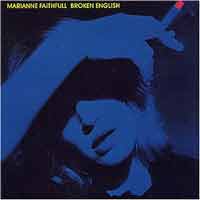 Ein ĂĽberzeugendes Comeback nach jahrelangem Drogensumpf. Der Titeltrack
ist ein absoluter Killersong, ebenso zwei Coversongs: "Ballad Of
Lucy Jordan" von Shel Silverstein
(dieses Lied wollten Dr. Hook damals nicht haben! Pech gehabt!) und "Working
Class Hero" von John Lennon.
Ein ĂĽberzeugendes Comeback nach jahrelangem Drogensumpf. Der Titeltrack
ist ein absoluter Killersong, ebenso zwei Coversongs: "Ballad Of
Lucy Jordan" von Shel Silverstein
(dieses Lied wollten Dr. Hook damals nicht haben! Pech gehabt!) und "Working
Class Hero" von John Lennon. |
| The Clash: "London Calling" (Columbia, Dez. 1979) |
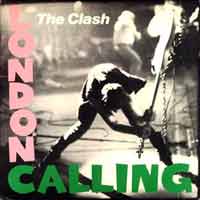 DER KLASSIKER des Punkrock. Das hab ich damals natĂĽrlich noch nicht
verstanden, sondern weiß dieses Album erst seit einigen Jahren zu schätzen!
DER KLASSIKER des Punkrock. Das hab ich damals natĂĽrlich noch nicht
verstanden, sondern weiß dieses Album erst seit einigen Jahren zu schätzen!
|
| "No Nukes" (Elektra/Asylum, Dez. 1979) |
|
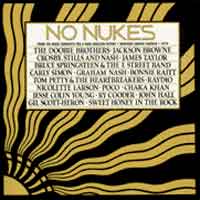 Mag
sein, dass dieser Konzertfilm nicht die Wichtigkeit von "Woodstock"
hat - fĂĽr mich ist das aber eines der besseren Triple-Livealben
mit durchweg soliden bis guten Auftritten von vielen KĂĽnstlern.
AuĂźerdem war es uns allen damals wichtig, unsere Anti-AKW-Position deutlich
zu machen. Mag
sein, dass dieser Konzertfilm nicht die Wichtigkeit von "Woodstock"
hat - fĂĽr mich ist das aber eines der besseren Triple-Livealben
mit durchweg soliden bis guten Auftritten von vielen KĂĽnstlern.
AuĂźerdem war es uns allen damals wichtig, unsere Anti-AKW-Position deutlich
zu machen.
"NO NUKES is a feature rock film that depicts five
nights of concerts at Madison Square Garden and a 250,000 person rally
at the World Trade Center. The concerts, which took place in September,
1979, were organized by Musicians United for Safe Energy (MUSE) which
also produced the Warner Brothers feature film, NO NUKES and the 3 Record
LP and CD release, also called NO NUKES .. NO NUKES, showcases great
performances by Jackson Browne, Bonnie Raitt, Bruce Springsteen, Crosby,
Stills and Nash, James Taylor, the Doobie Brothers, John Hall, Jesse
Colin Young, Gil Scott Heron, Peter Tosh, Tom Petty and many others."
|
| "Amazing Rhythm Aces" (Columbia, 1979) |
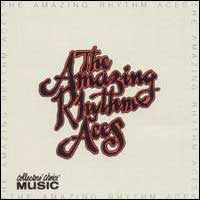

 Mehr ...
Mehr ...
|
By 1979, the Aces' recording career was winding down and their longtime
label folded. As a result, this record was released on both ABC and Columbia
with the only difference being the picture on the back cover. This album
also saw the departure of guitarist/producer Barry Burton. Whatever the
causes, this is their strongest album in some time.
(by Jim Worbois, All
Music Guide)
|
|
| Danny Adler: "The Danny Adler Story" (Do It, 1979) |
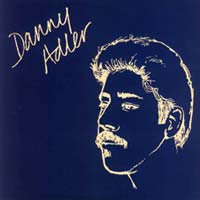 Das erste Soloalbum dws damals in England lebenden US-Gitarristen hätte eigentlich
das zweite Album seiner Band Roogalator werden sollen. Die hatte sich aber kurz zuvor aufgelöst.
Das erste Soloalbum dws damals in England lebenden US-Gitarristen hätte eigentlich
das zweite Album seiner Band Roogalator werden sollen. Die hatte sich aber kurz zuvor aufgelöst.
(21.03.2020)

 Mehr ...
Mehr ...
Roogalator were dead, but why should they lie down? Going back to the tapes for their abandoned second album, band leader Danny Adler needed make a bare minimum of changes to transform it into his solo debut, and the title -- The Danny Adler Story -- tells you exactly what you're getting. From the opening "Ride With the Roogalator," Story is a bracing ride through Adler's entire musical history. The formative thrill of Chuck Berry's "Nadine," short-circuited through Wilco Johnson guitars and Attractions high tension, harks back to the first music Adler ever fell in love with; "Dream Rider" floats on the same soulful funk vibe that occupied his days jamming around the clubs of his native Cincinnati; and the rancorous "Zero Hero," Roogalator's final 45, shows how far he'd taken those role models in the years since then. Occasional sonic comparisons to later 10cc and early Steve Miller notwithstanding, it's an adventurous and often brittle set. In these days of totalitarian political correctness, a song like "Humanitation" could not even be written, let alone recorded -- set to a dramatic spiky reggae beat, the litany of racial nicknames that opens the lyric is eye-popping even when you know what the song's ultimate, harmonic message is. The aforementioned "Zero Hero" is equally hard-hitting, a spiteful put-down of such Dylanesque proportions that one still wonders who the song is about. (A clue -- "He's so pathetic and he really, really rocks.") "Movin' Easy," contrarily, is one of Adler's Midwestern epics, bristling with the smell of warm tar, the feel of the railroad, and the freedom of the turnpike in the early morning hours. The punningly titled "Trance It" (say it fast and think of buses) takes a similar journey later in the day -- even the guitars sound like car horns, and Adler emerges at the end of the album as one of modern Americana's greatest (and, infuriatingly, most underrated) dream weavers. This album's title, however, should not be taken at face value. The Danny Adler Story is merely the beginning of one chapter.
(by Dave Thompson, All Music Guide)
|
| Arthur Blythe: "Lennox Avenue Breakdown" (Columbia, 1979) |
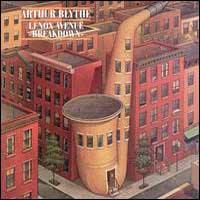 Ein Jazzklassiker - auch wenn er nicht aus den 50ern stammt. Arthur Blythe
ist definitiv einer der weltbesten Altsaxophonisten und sollte damals,
soweit ich weiĂź, von CBS zum Star aufgebaut werden. Es entstanden tolle
Platten wie diese, aber fĂĽr den Mainstream war der Mann dann doch
wohl zu sperrig. Jahre später hat man sich dann bei der Firma auf
Wynton Marsalis konzentriert, was ja bekanntlich kommerziell mehr
Sinn gemacht hat.
Ein Jazzklassiker - auch wenn er nicht aus den 50ern stammt. Arthur Blythe
ist definitiv einer der weltbesten Altsaxophonisten und sollte damals,
soweit ich weiĂź, von CBS zum Star aufgebaut werden. Es entstanden tolle
Platten wie diese, aber fĂĽr den Mainstream war der Mann dann doch
wohl zu sperrig. Jahre später hat man sich dann bei der Firma auf
Wynton Marsalis konzentriert, was ja bekanntlich kommerziell mehr
Sinn gemacht hat.
ZurĂĽck zu dieser tollen Platte, auf der fĂĽr mich drei Solisten
herausragen: neben Blythe sind das der Tubaspieler Bob Stewart,
mit dem Blythe auch heutzutage noch spielt (z.B. vor wenigen Tagen in
Dinslaken als Duo!) und der Gitarrist James 'Blood' Ulmer, der
hier zeigt, dass er nicht nur Krach machen kann. Auch die Rhythmusgruppe
ist vom Feinsten: Trommler Jack
DeJohnette (zu ihm braucht man nichts weiter sagen), Bassist Cecil
McBee (spielte u.a. auf den tollen FrĂĽh70er-Alben von Pharoah
Sanders) und Perkussionist Guillermo Franco.
(26.11.2005) |
| Lee Clayton: "Naked Child" (Capitol, 1979) |
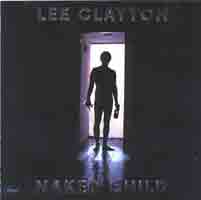 Nach
Einschätzungen vieler Leute ist dies sein Meisterwerk. Der harte
Sound der E-Gitarren von Clayton und seinem Leadgitarristen Phil
Donnelly dominiert die Platte und hat wohl letztendlich dafĂĽr
gesorgt, dass das Album in Nashville keine Chance hatte. Dabei sind die
Songs genial, etwa "I Ride Alone", "Sexual Moon" oder
"A Little Cocaine". Naja: vielleicht waren ja auch die Texte
etwas zu heftig fĂĽr die Nashville-Mafia. Nach
Einschätzungen vieler Leute ist dies sein Meisterwerk. Der harte
Sound der E-Gitarren von Clayton und seinem Leadgitarristen Phil
Donnelly dominiert die Platte und hat wohl letztendlich dafĂĽr
gesorgt, dass das Album in Nashville keine Chance hatte. Dabei sind die
Songs genial, etwa "I Ride Alone", "Sexual Moon" oder
"A Little Cocaine". Naja: vielleicht waren ja auch die Texte
etwas zu heftig fĂĽr die Nashville-Mafia. |
| Roger Chapman: "Live In Hamburg" (Arista/Acrobat, 1979) |
|
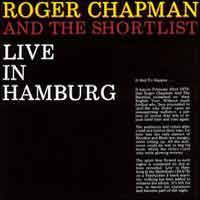 Dieses
Livealbum war damals fĂĽr mich ein absoluter Knaller. Songs wie
"Who Pulled The Night Down", Mickey Jupp's "Shortlist"
oder das Stones-Cover "Let's Spend The Night Together" bersten
geradezu vor Spielfreude. Meines Erachtens hat Chappo im Studio nie
diese Intensität erreichen können. Dieses
Livealbum war damals fĂĽr mich ein absoluter Knaller. Songs wie
"Who Pulled The Night Down", Mickey Jupp's "Shortlist"
oder das Stones-Cover "Let's Spend The Night Together" bersten
geradezu vor Spielfreude. Meines Erachtens hat Chappo im Studio nie
diese Intensität erreichen können.
"The glossy sounds of Roger Chapman's solo debut
(Chappo) are replaced here by renditions that crackle with energy. This
album, originally an August 1979 radio broadcast, pairs a hard-hitting
band with Chapman's gruff vocals, and it was demonstrative of Chapman's
dedication to his R&B roots with covers of Willie Dixon, Chuck Berry
and Little Richard. Thanks to this album's lineup of the Shortlist (Mel
Collins, Tim Hinkley, Jerome Rimson), even the ballads rock." (Patrick
Little)
|
| Miles Davis: "Circle In The Round" (Columbia, 1979) |
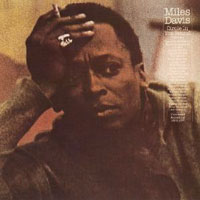 Meine persönliche "Entdeckung" von Miles Davis
fällt leider in seine stumme Phase etwa ab 1974/75, die erst 1981 mit
"The Man With The Horn" endete. Columbia betrieb in dieser Zeit
"Restverwertung", wenn auch sehr geschmackvolle: etwa das '76er-Album
"Waterbabies" mit Aufnahmen
von 1967 bis '68 oder dieses starke Doppelalbum, das die Zeit von 1955
(mit John Coltrane) bis 1970 abdeckt. Bemerkenswert sind vor allem
das 26minĂĽtige TitelstĂĽck von 1967, bei dem das klassische Miles Davis-Quintett
der 60er (Herbie Hancock, Wayne Shorter, Ron Carter
& Tony Williams) um den Gitarristen Joe Beck erweitert
zu hören ist, sowie die ungewöhnliche, 18minütige Version des David
Crosby-Songs "Guinnevere" aus der Entstehungszeit von "Bitches
Brew". Das Album gilt zwar nicht unbedingt als Klassiker, aber
ist dennoch eines meiner liebsten von Miles!
Meine persönliche "Entdeckung" von Miles Davis
fällt leider in seine stumme Phase etwa ab 1974/75, die erst 1981 mit
"The Man With The Horn" endete. Columbia betrieb in dieser Zeit
"Restverwertung", wenn auch sehr geschmackvolle: etwa das '76er-Album
"Waterbabies" mit Aufnahmen
von 1967 bis '68 oder dieses starke Doppelalbum, das die Zeit von 1955
(mit John Coltrane) bis 1970 abdeckt. Bemerkenswert sind vor allem
das 26minĂĽtige TitelstĂĽck von 1967, bei dem das klassische Miles Davis-Quintett
der 60er (Herbie Hancock, Wayne Shorter, Ron Carter
& Tony Williams) um den Gitarristen Joe Beck erweitert
zu hören ist, sowie die ungewöhnliche, 18minütige Version des David
Crosby-Songs "Guinnevere" aus der Entstehungszeit von "Bitches
Brew". Das Album gilt zwar nicht unbedingt als Klassiker, aber
ist dennoch eines meiner liebsten von Miles!
(19.05.2009)

 Mehr ...
Mehr ...
Although this two-disc set is a compilation — primarily consisting of extended outtakes — Circle in the Round features the true colors of jazz chameleon Miles Davis (trumpet) during a 15-year (1955-1970) span from eight different recording sessions. Whether it was serendipity or astute coordination that gathered these sides together, Davis enthusiasts will undoubtedly find plenty to enjoy from his prolific and seemingly perpetual metamorphosis. The sessions are presented chronologically for the most part, beginning with a composite of "Two Bass Hit." This version is from an October 1955 Kind of Blue session featuring John Coltrane (tenor sax) and a band Davis refers to as "the trio": Red Garland (piano), Paul Chambers (bass), and Philly Joe Jones (drums). From the May 1958 recording date comes another major session featuring an all-star lineup: Julian "Cannonball" Adderley (alto sax), Coltrane (tenor sax), Bill Evans (piano), Paul Chambers (bass), and Jimmy Cobb (drums). Their single take on Cole Porter's "Love for Sale" is an amazing performance that allows for some intensely cool solos from Miles and Adderley in particular. Listen as well for some tasty piano fills from Evans, as this is the sort of interaction that he'd become synonymous with. Although "Blues No. 2" is taken from the final session at which Davis and Coltrane would record together, studio documentation reveals that Coltrane did not perform on this piece. The title track appears in an unedited form on the Miles Davis Quintet, 1965-68: The Complete Columbia Studio box set. It is a heavily Eastern-influenced freebop work featuring Davis — who is also credited with performing on chimes during this session — with his famous late-'60s quintet, featuring Wayne Shorter (tenor sax), Herbie Hancock (celeste), Ron Carter (bass), and Tony Williams (drums), as well as Joe Beck (guitar). Two early-1968 sessions featuring George Benson (guitar) with the previously mentioned quintet make up the bulk of the second disc. These tracks are fusion incarnate. The delicate interplay between Benson and Hancock is inspiring on both versions of "Side Car" — although the second reading seems more focused. From a January 1970 Bitches Brew session is a jaw-dropping reading of David Crosby's "Guinnevere," a complete version of which is available on the highly recommended Complete Bitches Brew Sessions (August 1969-February 1970) box set. Although seemingly hodgepodge in arrangement, Circle in the Round is a brilliant examination of the depth of scope and range possessed by Miles Davis.
(by Lindsay Planer, All Music Guide)
|
| Mick Goodrick: "In Pas(s)ing" (ECM, 1979) |
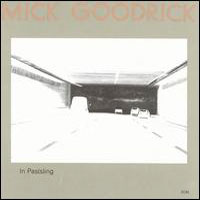 Ein eher unbekanntes, aber sehr schönes Album aus dem Hause ECM.
Mick Goodrick war zuvor Gitarrist im Gary Burton Quintett und wurde
wohl in diesem Zusammenhang "genötigt", auch mal selber
in die "erste Reihe" zu wechseln. Ansonsten ist er wohl eher
als Gitarrenlehrer bekannt: einer seiner prominentesten SchĂĽler war
Pat Metheny, mit dem er fĂĽr
einige Zeit sogar zusammen bei Burton spielte (z.B. auf "Dream So
Real" von 1976) und der ihn dort dann ablöste ("Passengers"
von 1977).
Ein eher unbekanntes, aber sehr schönes Album aus dem Hause ECM.
Mick Goodrick war zuvor Gitarrist im Gary Burton Quintett und wurde
wohl in diesem Zusammenhang "genötigt", auch mal selber
in die "erste Reihe" zu wechseln. Ansonsten ist er wohl eher
als Gitarrenlehrer bekannt: einer seiner prominentesten SchĂĽler war
Pat Metheny, mit dem er fĂĽr
einige Zeit sogar zusammen bei Burton spielte (z.B. auf "Dream So
Real" von 1976) und der ihn dort dann ablöste ("Passengers"
von 1977).
Auf "In Pas(s)ing", einer seiner wenigen Arbeiten unter eigenem
Namen, wird er unterstĂĽtzt von zwei begnadeten Rhythmikern, die auf
vielen ECM-Produktion dieser Zeit zu hören waren: Trommler Jack
DeJohnette und Bassist Eddie Gomez. Seltener im ECM-Umfeld
zu finden ist dagegen der Brite John Surman an Sopran- und Baritonsaxofon,
sowie der Bassklarinette.
Fünf lange und luftige Goodrick- oder Bandkompositionen sind zu hören:
Kein Freejazz, kein Mainstream-Jazz, auch kein Jazzrock, sondern einfach
nur herrliche Musik.
(18.07.2006)

 Mehr ...
Mehr ...
|
Guitarist Mick Goodrick once worked alongside Pat Metheny in Gary Burton's
band, and they have a similar sound, voicings, and eclectic approach.
Goodrick's 1978 debut as a leader was a strong set that had fusion, straight-ahead,
and even almost free pieces. He also headed a strong band, with English
saxophonist John Surman at his terse, animated best, plus bassist Eddie
Gomez and drummer Jack DeJohnette in fine form.
(by Ron Wynn, All Music
Guide)
|
|
| Guru Guru Sunband: "Hey Du" (Brain, 1979) |
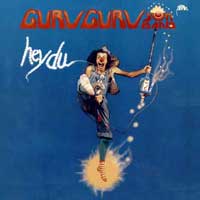
Warnung: der folgende Artikel enthält eine hohe Dosis Name Dropping,
vor dessen Verzehr in dieser Zusammensetzung gewarnt werden muss!
Das ist vielleicht nicht die beste Guru Guru-Platte, aber ICH
LIEBE DIESE SCHEIBE. Denn sie hat Humor. Und gute Musik.
Ich kann mich noch an ein tolles Konzert im Audimax der Uni Duisburg
erinnern: die Band hatte einfach drauflos gejammt, weil Ober-Guru Mani
Neumeier (mal wieder) die Besetzung um die Ohren geflogen war. Und
so hatten (ungeprobt?) Helmut Hattler und Ingo Bischof
von Kraan ausgeholfen. Mani war damals
auch zum "Sänger" mutiert und hatte das Trommeln weitestgehend
Ex-Embryo-Mann Butze Fischer ĂĽberlassen. Auf "Hey
Du" ist diese chaotische Phase dann auch gut dokumentiert, denn
gleich drei Bassisten sind neben Neumeier, Fischer (im Gegensatz zu
Genesis/Phil Collins dürfen bei Guru Guru "Ergänzungsspieler"
fĂĽr singende Trommler auch auf den Studioplatten mitmachen!), Langzeitmitglied
Roland Schaeffer (Gitarre, Sax) und Bischof (jetzt anscheinend
fest dabei) zu hören: Ex-Karthago Gerald Luciano Hartwig
(bei Karthago spielte Ingo B. auch mal. Und sogar Glenn Cornick
von Jethro Tull und Wild
Turkey. Aber das sind andere Geschichten ...), Peter KĂĽhmstedt
(der hat mal mit Stoppok in Dinslaken gespielt - mit den Rusty
Nails als Vorgruppe!) und ein gewisser Karla-Maria von Sinnen,
der auf dem Coverfoto doch groĂźe Ă„hnlichkeit zu einem gewissen
Helmut Hattler aufweist.
Das Beste aber sind Mani Neumeiers Dada-Texte, die ich auch heute noch
sinn(?)gemäß ohne nachzuschlagen (wo auch?) zitieren kann:
"HĂĽhner fahr'n Mercedes auf dem Pfarrer seine
Stirn"
Oder noch besser:
"Verflixt, es ist doch wie verhext,
wir bräuchten noch mehr deutschen Text,
Nur eine Zeile gibt's, die mir gefällt
Und die geht so:
Was fĂĽr'ne Welt!"
PS.: Der Namenszusatz "Sun Band" wurde bei der nächsten
Guru-Platte übrigenz wieder gestrichen. War auch ziemlich blöd.
Und irgendwie nicht so richtig lustig.
|
| Garland Jeffreys: "American Boy & Girl" (A&M, 1979) |
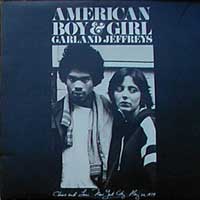

 Mehr ...
Mehr ...
|
Much like his previous efforts, Garland Jeffreys doesn't cover any new
ground here. Written as a sort of concept for a couple of kids who are
pictured on the cover, nothing here sticks. Another record that could
have been.
(by James Chrispell, All
Music Guide)
|
|
| Mangelsdorff/Dauner/Gomez/Jones: "A Jazz Tune I Hope" (MPS, 1979) |
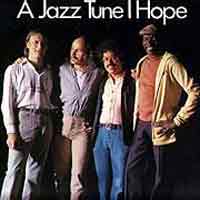 Ein Gigantentreffen: die deutschen Spitzenjazzer Albert Mangelsdorff (Posaune)
und Wolfgang Dauner (Piano) zusammen mit der amerikanischen Rhythmusgruppe
Eddie Gomez (Kontrabass) und Elvin Jones (Schlagzeug). Die
Platte hält musikalisch alles, was die Namen der Beteiligten versprechen!
Ein Gigantentreffen: die deutschen Spitzenjazzer Albert Mangelsdorff (Posaune)
und Wolfgang Dauner (Piano) zusammen mit der amerikanischen Rhythmusgruppe
Eddie Gomez (Kontrabass) und Elvin Jones (Schlagzeug). Die
Platte hält musikalisch alles, was die Namen der Beteiligten versprechen! |
| Danny O'Keefe: "Global Blues" (Warner, 1979) |
|
 Eines der raren 70er-Kultalben des Kult-Songschreibers. Ich habe dieses
Album, ganz entgegen meinen sonstigen Gepflogenheiten, fĂĽr viel
Geld (ich glaube 35 DM) in einem Second-Hand-Laden erstanden. So weit
ich weiß hat Warner das Album immer noch nicht auf CD wiederveröffentlicht
(Kult = kein kommerzieller Erfolg?).
Eines der raren 70er-Kultalben des Kult-Songschreibers. Ich habe dieses
Album, ganz entgegen meinen sonstigen Gepflogenheiten, fĂĽr viel
Geld (ich glaube 35 DM) in einem Second-Hand-Laden erstanden. So weit
ich weiß hat Warner das Album immer noch nicht auf CD wiederveröffentlicht
(Kult = kein kommerzieller Erfolg?).
Kurz, nachdem ich meine alte Vinylausgabe digitalisiert habe ist endlich
das CD-Reissue da!
(Mai 2006)

 Mehr ...
Mehr ...
|
"When you think about it for a second, The Global Blues makes sense.
This unrelievedly garrulous, convoluted, annoying and striking album is
the work of a singer/songwriter who never hit it quite as big as he, for
one, thought he should have. But Danny O'Keefe's resentment is probably
undeserved. His best-known songs, "Good Time Charlie's Got the Blues"
and "Magdalena," each boasted a catchy little hook — a
phrase, a few notes — and a boatload of easy cynicism and sentimentality.
Along with his sharp, nasal voice (so grating it's fascinating), O'Keefe
had a stardom commensurate with his abilities: a couple of AM hits and
listeners were tired of him. Similar pop folkies made better music (Gilbert
O'Sullivan, for example), and some made worse (B.W. Stevenson, after "My
Maria").
What The Global Blues has going for it is O'Keefe's go-for-broke attitude.
While his former backup singers, Linda Ronstadt and the Eagles, have moved
on to higher banalities, Danny O'Keefe has depleted his reservoir of comforting
irony: all he's got left is bemusement. Thus the title tune, employing
a faded love affair as a metaphor for the dissipation of the universe,
is extremely pretentious but so modestly performed it gets you on the
singer's side immediately.
How long you'll want to stay there is another question. By side two, O'Keefe
is fashioning atonal odes to Atlas and yowling howlers like "Mother
Mary, save the babies." Before that, however, he's managed some seductive
pop melodies ("On the Wheel of Love," "Livin' in the Modern
Age") and scored one small triumph. "The Street" is a tersely
rendered vision of all the romantic notions of the Sixties, tied to wry
predictions for the future. There's a soaring, chillingly unsentimental
chorus that's just lovely. I guess we can't count Danny O'Keefe out yet."
(Ken Tucker, Rolling Stone)
|
|
| Synthesis: "Sentiments" (Ra, 1979) |
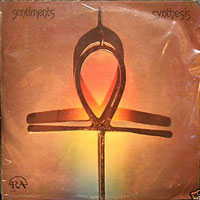 1979 war ich gerade in einer schwergewichtigen Jazzphase, in der ich im Radio
(oder bei Freunden?) auch auf Arthur Blythe, den neuen Stern am
Altsaxofonhimmel, aufmerksam wurde. Im Sommer '79 oder '80 haben wir dann
mit einem ganzen Trupp von Freunden beim Jazzfestival in der Balver Höhler
im Sauerland gecampt, wo es natĂĽrlich auch ein paar auf Jazz spezialisierte
Plattenhändler gab. Dort fand ich aber nur diese bereits 1976 aufgenommene
LP "Sentiments" der Band Synthesis, bei der jener Arthur
Blythe Mitglied war. Zu hause war ich dann etwas enttäuscht,
denn diese Musik an der Grenze von Hardbop, Weltmusik und Freejazz war
weit vom ECM-Sound entfernt, an den ich mich bereits
"gewöhnt" hatte, sodaß diese Platte damals von mir
kaum gehört wurde - unter anderem auch, weil ich inzwischen das beim
Major CBS erschienene und wesentlich zugänglichere Soloalbum
"Lenox Avenue Breakdown" aufgetrieben
hatte. Jahre später hörte ich mir die Platte nochmals an, weil
der andere beteiligte Saxophonist, David Murray, inzwischen Dank
seiner Grateful Dead-Hommage auf meinem
"Radar" aufgetaucht war. KĂĽrzlich habe ich das Album doch
noch mal herausgekramt und sogar festgestellt, dass ich inzwischen sogar
den beteiligten Trompeters Olu Dara von mehreren Cassandra
Wilson-Alben kenne. AuĂźerdem kann ich mit der Musik von Synthesis
inzwischen deutlich mehr anfangen ...
1979 war ich gerade in einer schwergewichtigen Jazzphase, in der ich im Radio
(oder bei Freunden?) auch auf Arthur Blythe, den neuen Stern am
Altsaxofonhimmel, aufmerksam wurde. Im Sommer '79 oder '80 haben wir dann
mit einem ganzen Trupp von Freunden beim Jazzfestival in der Balver Höhler
im Sauerland gecampt, wo es natĂĽrlich auch ein paar auf Jazz spezialisierte
Plattenhändler gab. Dort fand ich aber nur diese bereits 1976 aufgenommene
LP "Sentiments" der Band Synthesis, bei der jener Arthur
Blythe Mitglied war. Zu hause war ich dann etwas enttäuscht,
denn diese Musik an der Grenze von Hardbop, Weltmusik und Freejazz war
weit vom ECM-Sound entfernt, an den ich mich bereits
"gewöhnt" hatte, sodaß diese Platte damals von mir
kaum gehört wurde - unter anderem auch, weil ich inzwischen das beim
Major CBS erschienene und wesentlich zugänglichere Soloalbum
"Lenox Avenue Breakdown" aufgetrieben
hatte. Jahre später hörte ich mir die Platte nochmals an, weil
der andere beteiligte Saxophonist, David Murray, inzwischen Dank
seiner Grateful Dead-Hommage auf meinem
"Radar" aufgetaucht war. KĂĽrzlich habe ich das Album doch
noch mal herausgekramt und sogar festgestellt, dass ich inzwischen sogar
den beteiligten Trompeters Olu Dara von mehreren Cassandra
Wilson-Alben kenne. AuĂźerdem kann ich mit der Musik von Synthesis
inzwischen deutlich mehr anfangen ...
(11.10.2009) |
| "Terje Rypdal/Miroslav Vitous/Jack DeJohnette" (ECM, 1979) |
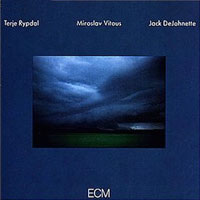 Dieses titellose Album ist erst im Rahmen der billigen Touchstone-Serie (40 klassische
ECM-Alben fĂĽr jeweils weniger als 10 Oiro im Pappcover) unter meinen Radar
gekommen. Ein selbst für ECM-Verhältnisse fantastischer Sound, in dem
alle drei Protagonisten etwas abrufen, da nach meiner bescheidenen Meinung
zu ihren jeweiligen Bestleistungen gehört. Beieindruckend ist u. a., wie
DeJohnette in einer ziemlich
"unrhythmischen" Musik dermaĂźen toll Schlagzeug spielen kann.
Der wahre Meister der Becken!
Dieses titellose Album ist erst im Rahmen der billigen Touchstone-Serie (40 klassische
ECM-Alben fĂĽr jeweils weniger als 10 Oiro im Pappcover) unter meinen Radar
gekommen. Ein selbst für ECM-Verhältnisse fantastischer Sound, in dem
alle drei Protagonisten etwas abrufen, da nach meiner bescheidenen Meinung
zu ihren jeweiligen Bestleistungen gehört. Beieindruckend ist u. a., wie
DeJohnette in einer ziemlich
"unrhythmischen" Musik dermaĂźen toll Schlagzeug spielen kann.
Der wahre Meister der Becken!
(15.04.2009) |
| "Mick Taylor" (Columbia, 1979) |
 Das titellose, verspätete, aber gelungene Solodebüt des ehemaligen
Leadgitarristen der Rolling Stones, mit dabei u.a. Pierre Moerlen
(Gong) und Lowell George (Little Feat).
Das titellose, verspätete, aber gelungene Solodebüt des ehemaligen
Leadgitarristen der Rolling Stones, mit dabei u.a. Pierre Moerlen
(Gong) und Lowell George (Little Feat).
(16.04.2017)

 Mehr ...
Mehr ...
Mick Taylor's self-titled debut album is rather different than one would imagine for an ex-Rolling Stone and former Bluesbreaker. As to whether this is due to the conformist sound of the lighter numbers ("Leather Jacket," "Baby I Want You," etc.) or the fact that his singing voice is so much more average than Jagger or Mayall's is debatable. In any case, Mick Taylor is an undeniably attractive and often surprising album. The highlight and thrust of the album is Taylor's astounding guitar playing. His fusion of blues and rock styles, and, of course, his slide guitar work, is constantly impressive. "Slow Blues," "Giddy-Up," and "Spanish/A Minor" feature some particularly gob-smacking guitar solos. Lyrically, Mick Taylor is a little lightweight, but at worst competent. Similarly, some of the music is at times cheesy, attempting to blend in with the sound of the time. Nevertheless, Mick Taylor's first attempt at a solo recording is a fine effort and one that improves with time.
(by Ben Davies, All Music Guide)
After a period of personal and professional reassessment Mick Taylor emerged from the shadows of his classic stint in the Rolling Stones with his first solo album. Mix Stonesy rock and blues with Jeff Beck's Blow by Blow and the resulting stew will sound something like Mick Taylor’s eponymous debut.
A great cast of musicians also show up to support Mr. Taylor, including Lowell George (Little Feat), Pierre Moerlen (Gong) and keyboardist Jean Roussell (Cat Stevens).
After a long absence this much overlooked release returns to compact disc with a fresh mastering from Grammy® award winning engineer, Vic Anesini and new liner notes by Kris Needs. Release includes a very rare, promo-only single version of "Leather Jacket" with different guitar parts as a bonus track.
(iconoclassicrecords. com)
|
| Collin Walcott/Don Cherry/Nana Vasconcelos: "Codona" (ECM, 1979) |
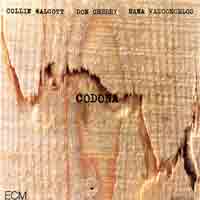 Eine interessante Kombination von Musikern fand sich zu diesem Projekt zusammen:
Collin Walcott, Tabla- und Sitarspieler von Oregon,
Trompeter Don Cherry (hat schon mit allen Jazzgrößen von John Coltrane bis Ornette Coleman gespielt)
und der brasilianische Perkussionist Nana Vasconcelos (Langzeitpartner von Egberto Gismonti).
Eine interessante Kombination von Musikern fand sich zu diesem Projekt zusammen:
Collin Walcott, Tabla- und Sitarspieler von Oregon,
Trompeter Don Cherry (hat schon mit allen Jazzgrößen von John Coltrane bis Ornette Coleman gespielt)
und der brasilianische Perkussionist Nana Vasconcelos (Langzeitpartner von Egberto Gismonti).
|
![]() Das Album des Jahres
Das Album des Jahres weitere Highlights ...
weitere Highlights ...  Mehr ...
Mehr ...
 "With
the foot flat down on the accelerator, and steering a course for world
stardom, Elvis & co. made their best selling album of the pre-Warner
Brothers era. The images of travel, drink & drugs were formulated
& shaped while on the road, during which time their musical diet consisted
of tapes by David Bowie (Low & Heroes),
Iggy Pop (Idiot & Lust For Life), Abba (Greatest Hits), The Rolling
Stones (Aftermath & Between
The Buttons) & The Byrds, plus some soul and C&W."
"With
the foot flat down on the accelerator, and steering a course for world
stardom, Elvis & co. made their best selling album of the pre-Warner
Brothers era. The images of travel, drink & drugs were formulated
& shaped while on the road, during which time their musical diet consisted
of tapes by David Bowie (Low & Heroes),
Iggy Pop (Idiot & Lust For Life), Abba (Greatest Hits), The Rolling
Stones (Aftermath & Between
The Buttons) & The Byrds, plus some soul and C&W."
 Ich liebe die Musik der Roche-Schwestern mit ihrem schaurig-schönen,
aber immer perfekten und deshalb einzigartigen Gesang! Dies ist das DebĂĽt
der Schwestern als Trio, die sich in dem Song "We" selber vorstellen
und dort fragen: "Guess Which Two Of Us Made A Record?" (Maggie
und Terre im Jahr 1975). Als Produzent
ist erstaunlicherweise Robert Fripp dabei, der mit dem späteren
King Crimson-Bassisten Tony Levin auch die Begleitband bildet.
Ich liebe die Musik der Roche-Schwestern mit ihrem schaurig-schönen,
aber immer perfekten und deshalb einzigartigen Gesang! Dies ist das DebĂĽt
der Schwestern als Trio, die sich in dem Song "We" selber vorstellen
und dort fragen: "Guess Which Two Of Us Made A Record?" (Maggie
und Terre im Jahr 1975). Als Produzent
ist erstaunlicherweise Robert Fripp dabei, der mit dem späteren
King Crimson-Bassisten Tony Levin auch die Begleitband bildet.
 Mehr ...
Mehr ...
 SolodebĂĽt
eines der besten Rock- und Countrygitarristen. Der Brite begann seine
Karriere bereits in den 60ern und hatte von 1968 -1972 mit Heads
Hands & Feet eine von der Kritik hoch gelobte Band, die zum falschen
Zeitpunkt am falschen Ort virtuosen Countryrock spielte und kaum Platten
verkaufte. Dann ging er nach Amerika und spielte als Nachfolger von James
Burton in Emmylou Harris´ Hot Band.
Im Gegensatz zu späteren Soloproduktionen stehen hier allerdings
die Songs im Vordergrund, wenn Lee vielleicht auch als Sänger und
Songschreiber nicht genauso begabt ist wie als Gitarrist. Einzige Eigenkomposition
ist konsequenterweise ein Remake des HH&F-Klassikers "Country
Boy", eine unglaubliche Demonstration dessen, was man so im Countrybereich
auf der Telecaster zaubern kann. Dazu kommen zwei Lieder von Chas &
Dave (Chas Hodges war damals auch bei HH&F
dabei und hat mit seinem Partner Dave Peacock ein in England erfolgreiches
Duo), drei Songs seines Hot Band-Kollegen Rodney Crowell (u.a.
der Klassiker "Ain't Livin' Long Like This" und der Country-Klassiker
"Are You Wasting My Time" der Louvin-BrĂĽder. Nur die Dire
Straits-Nummer "Setting Me Up" musste vielleicht nicht sein.
Andererseits stand die Musik Mark Knopflers damals noch nicht fĂĽr
Mainstream-Muzak. Produziert hat das ganze in Nashville der Emmylou Harris-Spezi
Brian Ahern, die komplette Hot Band ist dabei (Crowell, Hank
DeVito, Glen Hardin, John Ware, Emory Gordy,
Ricky Skaggs und sogar Emmylou Harris persönlich).
In England haben Chas&Dave ihre beiden Songs selbst produziert und
eingespielt, unterstĂĽtzt vom alten HH&F-Trommler
Pete Gavin. Eine schöne und unspektakuläre Platte ohne
Technikgefrickel.
SolodebĂĽt
eines der besten Rock- und Countrygitarristen. Der Brite begann seine
Karriere bereits in den 60ern und hatte von 1968 -1972 mit Heads
Hands & Feet eine von der Kritik hoch gelobte Band, die zum falschen
Zeitpunkt am falschen Ort virtuosen Countryrock spielte und kaum Platten
verkaufte. Dann ging er nach Amerika und spielte als Nachfolger von James
Burton in Emmylou Harris´ Hot Band.
Im Gegensatz zu späteren Soloproduktionen stehen hier allerdings
die Songs im Vordergrund, wenn Lee vielleicht auch als Sänger und
Songschreiber nicht genauso begabt ist wie als Gitarrist. Einzige Eigenkomposition
ist konsequenterweise ein Remake des HH&F-Klassikers "Country
Boy", eine unglaubliche Demonstration dessen, was man so im Countrybereich
auf der Telecaster zaubern kann. Dazu kommen zwei Lieder von Chas &
Dave (Chas Hodges war damals auch bei HH&F
dabei und hat mit seinem Partner Dave Peacock ein in England erfolgreiches
Duo), drei Songs seines Hot Band-Kollegen Rodney Crowell (u.a.
der Klassiker "Ain't Livin' Long Like This" und der Country-Klassiker
"Are You Wasting My Time" der Louvin-BrĂĽder. Nur die Dire
Straits-Nummer "Setting Me Up" musste vielleicht nicht sein.
Andererseits stand die Musik Mark Knopflers damals noch nicht fĂĽr
Mainstream-Muzak. Produziert hat das ganze in Nashville der Emmylou Harris-Spezi
Brian Ahern, die komplette Hot Band ist dabei (Crowell, Hank
DeVito, Glen Hardin, John Ware, Emory Gordy,
Ricky Skaggs und sogar Emmylou Harris persönlich).
In England haben Chas&Dave ihre beiden Songs selbst produziert und
eingespielt, unterstĂĽtzt vom alten HH&F-Trommler
Pete Gavin. Eine schöne und unspektakuläre Platte ohne
Technikgefrickel. Zwar steht diese Platte schon recht Lange in meinem Plattenregal, aber
ich weiß sie erst seit kurzem zu schätzen. Der Vorläufer "Seed
Of A Memory" von 1976 war wohl nicht zuletzt wegen Produzent
Graham Nash zu einer typischen Westcoast-Singer/Songwriter-Platte
geworden, was vielen Leuten ĂĽberhaupt nicht, mir dagegen sehr gut
gefiel, nachdem ich die Scheibe in einer Grabbelkiste in den frĂĽhen
80ern gefunden hatte. In meiner damaligen Begeisterung habe ich dann auch
"Rogue Wave" in einem 2nd-Hand-Laden erstanden und war durch
die fetten und tief gestimmten Gitarren und die Phil-Spector Songs ("Baby
I Love You" in Slow Motion und Led Zeppelin-Sound mit bis zum tiefen
C herunter gestimmter E-Gitarre!) und das schrecklich-schöne Cover
doch etwas abgeschreckt. Wie fleiĂźige Leser meiner Seiten ja wissen, ist
Terry Reids Meisterwerk "River"
im vergangenen Jahr ja wieder neu aufgelegt und von mir erneut erworben
worden und kürzlich habe ich mich auch noch mal an meine alten Vinylschätze
gemacht und mir aus "Seed Of A Memory"
und "Rogue Waves" eine CDR gebastelt. Meine Erkenntnisse dabei:
Beide Alben unterscheiden sich gar nicht so sehr voneinander, wie ich
dachte: auf "Rough Waves" gibt´s zwar keine Pedal Steel,
aber doch auch schöne Akustikgitarren. Und diese für Terry Reid
typischen tief gestimmten Rhythmusgitarren sind auch schon auf "Seed..."
zu entdecken. Und beide Alben sind vor allem Dank Terrys Stimme auf ihre
Art toll. ĂĽberraschende Erkenntnis auch fĂĽr mich, dass diese
extrem tiefen Heavy-Gitarren offensichtlich keine Erfindung dieser dämlich
Nu-Metalls mit ihren halbhohen Hosen und Baseball-Käppis sind!
Zwar steht diese Platte schon recht Lange in meinem Plattenregal, aber
ich weiß sie erst seit kurzem zu schätzen. Der Vorläufer "Seed
Of A Memory" von 1976 war wohl nicht zuletzt wegen Produzent
Graham Nash zu einer typischen Westcoast-Singer/Songwriter-Platte
geworden, was vielen Leuten ĂĽberhaupt nicht, mir dagegen sehr gut
gefiel, nachdem ich die Scheibe in einer Grabbelkiste in den frĂĽhen
80ern gefunden hatte. In meiner damaligen Begeisterung habe ich dann auch
"Rogue Wave" in einem 2nd-Hand-Laden erstanden und war durch
die fetten und tief gestimmten Gitarren und die Phil-Spector Songs ("Baby
I Love You" in Slow Motion und Led Zeppelin-Sound mit bis zum tiefen
C herunter gestimmter E-Gitarre!) und das schrecklich-schöne Cover
doch etwas abgeschreckt. Wie fleiĂźige Leser meiner Seiten ja wissen, ist
Terry Reids Meisterwerk "River"
im vergangenen Jahr ja wieder neu aufgelegt und von mir erneut erworben
worden und kürzlich habe ich mich auch noch mal an meine alten Vinylschätze
gemacht und mir aus "Seed Of A Memory"
und "Rogue Waves" eine CDR gebastelt. Meine Erkenntnisse dabei:
Beide Alben unterscheiden sich gar nicht so sehr voneinander, wie ich
dachte: auf "Rough Waves" gibt´s zwar keine Pedal Steel,
aber doch auch schöne Akustikgitarren. Und diese für Terry Reid
typischen tief gestimmten Rhythmusgitarren sind auch schon auf "Seed..."
zu entdecken. Und beide Alben sind vor allem Dank Terrys Stimme auf ihre
Art toll. ĂĽberraschende Erkenntnis auch fĂĽr mich, dass diese
extrem tiefen Heavy-Gitarren offensichtlich keine Erfindung dieser dämlich
Nu-Metalls mit ihren halbhohen Hosen und Baseball-Käppis sind! Mehr ...
Mehr ...
 Dieses
vierte Studioalbum wird allgemein als sein bestes eingeschätzt -
meiner Meinung nach sind aber alle ziemlich gut, sodass es fĂĽr mich
mĂĽĂźig ist, da noch Unterschiede zu machen. Sicherlich ist die
Produktion Dank Jack Nietzsche wunderbar - meine Lieblingssongs
sind aber auf den anderen drei Alben.
Dieses
vierte Studioalbum wird allgemein als sein bestes eingeschätzt -
meiner Meinung nach sind aber alle ziemlich gut, sodass es fĂĽr mich
mĂĽĂźig ist, da noch Unterschiede zu machen. Sicherlich ist die
Produktion Dank Jack Nietzsche wunderbar - meine Lieblingssongs
sind aber auf den anderen drei Alben. Das
beeindruckende Debüt der Sängerin, Songschreiberin, Pianistin
und gelegentlichen Gitarristin aus dem Umfeld von Tom Waits. Die
Meisten dĂĽrften vor allem den Song "Chuck E's In Love"
kennen.
Das
beeindruckende Debüt der Sängerin, Songschreiberin, Pianistin
und gelegentlichen Gitarristin aus dem Umfeld von Tom Waits. Die
Meisten dĂĽrften vor allem den Song "Chuck E's In Love"
kennen.
 Mehr ...
Mehr ...
 Unterbewertetes
DebĂĽt des ehemaligen Little Feat-Bandleaders. Unterbewertet
vielleicht deshalb, weil das Album sehr kurz ist (knapp 30 Minuten) und
neben einigen Coversongs (z.B. "What Do You Want The Girl To Do"
von Allen Toussaint, "I Can´ Stand The Rain" von
Ann Peebles und "Easy Money" aus der Feder von Rickie
Lee Jones, ebenfalls zu finden auf deren fast zeitgleich erschienenem
DebĂĽtalbum) und einer Neuauflage des Featklassikers
"Two Trains" vomn "Dixie
Chicken"-Album) nur wenig neues Eigenmaterial des gerade als
Songschreiber so hoch verehrten Slidegitarristen bringt. Kurz nach Veröffentlichung
des Albums verstirb George mit Mitte 30 an Herzversagen: somit ist dieses
Debüt auch gleichzeitig das Vermächtnis eines der besten Rock-Songschreiber.
AuĂźerdem stelle ich zumindest aus der Distanz der Jahre fĂĽr mich
fest: eigentlich ein sehr schönes Album!
Unterbewertetes
DebĂĽt des ehemaligen Little Feat-Bandleaders. Unterbewertet
vielleicht deshalb, weil das Album sehr kurz ist (knapp 30 Minuten) und
neben einigen Coversongs (z.B. "What Do You Want The Girl To Do"
von Allen Toussaint, "I Can´ Stand The Rain" von
Ann Peebles und "Easy Money" aus der Feder von Rickie
Lee Jones, ebenfalls zu finden auf deren fast zeitgleich erschienenem
DebĂĽtalbum) und einer Neuauflage des Featklassikers
"Two Trains" vomn "Dixie
Chicken"-Album) nur wenig neues Eigenmaterial des gerade als
Songschreiber so hoch verehrten Slidegitarristen bringt. Kurz nach Veröffentlichung
des Albums verstirb George mit Mitte 30 an Herzversagen: somit ist dieses
Debüt auch gleichzeitig das Vermächtnis eines der besten Rock-Songschreiber.
AuĂźerdem stelle ich zumindest aus der Distanz der Jahre fĂĽr mich
fest: eigentlich ein sehr schönes Album! Allein
schon wegen des Titels gehört das Album hier hin. Ian Hunter (Ex-Mott
The Hoople) mit seinem Kumpel Mick Ronson (Ex-David Bowie
Band) in Höchstform. Hat im Rockpalast damals kaum jemand verstanden.
Allein
schon wegen des Titels gehört das Album hier hin. Ian Hunter (Ex-Mott
The Hoople) mit seinem Kumpel Mick Ronson (Ex-David Bowie
Band) in Höchstform. Hat im Rockpalast damals kaum jemand verstanden. Das letzte einer grandiosen Reihe von Alben der Band aus den 70ern. Es
enthält zwei geniale eigene Songs ("Dancing Barefoot" und
"Frederick"), sowie eine tolle Coverversion: "So You Wanna
Be A Rock'n'Roll Star" von den Byrds.
Produziert von Todd Rundgren.
Das letzte einer grandiosen Reihe von Alben der Band aus den 70ern. Es
enthält zwei geniale eigene Songs ("Dancing Barefoot" und
"Frederick"), sowie eine tolle Coverversion: "So You Wanna
Be A Rock'n'Roll Star" von den Byrds.
Produziert von Todd Rundgren.
 Mehr ...
Mehr ...
 Das
zweite Album des Ex-Brinsley Schwarz-Bassisten
war wiederum ein verkapptes Rockpile-Album
(Lowe mit Dave Edmunds, Billy Bremner und Terry Williams),
wieder mit klasse Songs, z.B. "Cruel To Be Kind" (von Nick Lowe
und dem alten Brinsley-Kollegen Ian Gomm) und "Switchboard
Susan" (von Mickey Jupp).
Das
zweite Album des Ex-Brinsley Schwarz-Bassisten
war wiederum ein verkapptes Rockpile-Album
(Lowe mit Dave Edmunds, Billy Bremner und Terry Williams),
wieder mit klasse Songs, z.B. "Cruel To Be Kind" (von Nick Lowe
und dem alten Brinsley-Kollegen Ian Gomm) und "Switchboard
Susan" (von Mickey Jupp). Emmylou
war damals ein Garant fĂĽr hochklassige Alben. Auch dieses mal sorgte
dafĂĽr ihr Gesang, die tolle Begleitung durch die Hot Band (u. a.
Albert Lee, Rodney Crowell, James Burton, Glenn
D.Hardin und Ricky Skaggs) und das wunderbare Songmaterial,
u.a. "Hickory Wind" (Byrds-Klassiker von Gram Parsons), "Even
Cowgirls Get The Blues" (Rodney Crowell) und "Save The Last
Dance For Me" (Mort Shuman, Doc Pomus).
Emmylou
war damals ein Garant fĂĽr hochklassige Alben. Auch dieses mal sorgte
dafĂĽr ihr Gesang, die tolle Begleitung durch die Hot Band (u. a.
Albert Lee, Rodney Crowell, James Burton, Glenn
D.Hardin und Ricky Skaggs) und das wunderbare Songmaterial,
u.a. "Hickory Wind" (Byrds-Klassiker von Gram Parsons), "Even
Cowgirls Get The Blues" (Rodney Crowell) und "Save The Last
Dance For Me" (Mort Shuman, Doc Pomus). "Digitally
recorded in 1979, Bop Till You Drop was the first album made that way.
But that's not why it's here. No, Ry Cooder has simply been one of the
best guitar players and mood setters around for the last thirty years.
(Thirty years?!? Help!) Discarding flash for taste, that´s his way.
And he´s played with some of the finest: Rolling Stones, Captain
Beefheart, Taj Mahal, to name but a few. Always giving them the diamonds
in the dirt. Bop Till You Drop is one of his finest solo moments. He´s
joined by, among others, David Lindley (he will probably be featured here
by himself one day) and Jim Keltner (purveyor of the understated groove,
thus the perfect drummer in this setting). And - of course - Ry Cooder´s
taste is also evident in the choice of material. From blues to gospel
to pop to teenage angst and back."
"Digitally
recorded in 1979, Bop Till You Drop was the first album made that way.
But that's not why it's here. No, Ry Cooder has simply been one of the
best guitar players and mood setters around for the last thirty years.
(Thirty years?!? Help!) Discarding flash for taste, that´s his way.
And he´s played with some of the finest: Rolling Stones, Captain
Beefheart, Taj Mahal, to name but a few. Always giving them the diamonds
in the dirt. Bop Till You Drop is one of his finest solo moments. He´s
joined by, among others, David Lindley (he will probably be featured here
by himself one day) and Jim Keltner (purveyor of the understated groove,
thus the perfect drummer in this setting). And - of course - Ry Cooder´s
taste is also evident in the choice of material. From blues to gospel
to pop to teenage angst and back."  Nachdem
die beiden zuvor erschienenen Alben "A
Period Of Transision" (1977) und "Wavelength" (1978)
etwas untergingen, war er mit diesem Album wieder voll da. Mit David
Hayes (bg), Mark Jordan (keyb), Mark Isham (tp), Pee
Wee Ellis (sax), Peter van Hooke (dr), Herbie Armstrong
(g) und Katie Kissoon (voc) hatte er eine neue Band um sich versammelt,
die bei den Konzerten der nächsten Jahre noch glänzen würde.
Als Gäste sind u.a. Ry Cooder, Tablaspieler Zakir
Hussain (Shakti?) und der lang verschollene Robin Williamson
(Ex-Incredible String Band) dabei.
Von den Liedern seien vor allem "Bright Side Of The Road", "Full
Force Gale", "You Make Me Feel So Free" und die einzige
Coverversion "It´s All In The Game" hervorgehoben.
Nachdem
die beiden zuvor erschienenen Alben "A
Period Of Transision" (1977) und "Wavelength" (1978)
etwas untergingen, war er mit diesem Album wieder voll da. Mit David
Hayes (bg), Mark Jordan (keyb), Mark Isham (tp), Pee
Wee Ellis (sax), Peter van Hooke (dr), Herbie Armstrong
(g) und Katie Kissoon (voc) hatte er eine neue Band um sich versammelt,
die bei den Konzerten der nächsten Jahre noch glänzen würde.
Als Gäste sind u.a. Ry Cooder, Tablaspieler Zakir
Hussain (Shakti?) und der lang verschollene Robin Williamson
(Ex-Incredible String Band) dabei.
Von den Liedern seien vor allem "Bright Side Of The Road", "Full
Force Gale", "You Make Me Feel So Free" und die einzige
Coverversion "It´s All In The Game" hervorgehoben. XTC wurden anfangs als Punkrocker verkauft. Das lag vielleicht daran,
dass sie 1977/78 in der Londoner Szene erstmals in Erscheinung traten
und auf ihrem ersten Album ("White Music"?) durchaus die rohe
Energie einer Punkband zeigten. Mit den folgenden Alben wurde aber immer
deutlicher, dass die Band um den Sänger, Gitarristen & Songschreiber(90%)
Andy Partridge und den Sänger, Bassisten & Songschreiber(10%)
Colin Moulding eher ihr Vorbild in den Beatles hatte. Auf diesem
Album findet man einen ihrer größten Hits "Making Plans
For Nigel", ausnahmsweise von Moulding komponiert.
XTC wurden anfangs als Punkrocker verkauft. Das lag vielleicht daran,
dass sie 1977/78 in der Londoner Szene erstmals in Erscheinung traten
und auf ihrem ersten Album ("White Music"?) durchaus die rohe
Energie einer Punkband zeigten. Mit den folgenden Alben wurde aber immer
deutlicher, dass die Band um den Sänger, Gitarristen & Songschreiber(90%)
Andy Partridge und den Sänger, Bassisten & Songschreiber(10%)
Colin Moulding eher ihr Vorbild in den Beatles hatte. Auf diesem
Album findet man einen ihrer größten Hits "Making Plans
For Nigel", ausnahmsweise von Moulding komponiert.
 Mehr ...
Mehr ...
 Mit ihrem zweiten Album liefert uns die Songschreiberin und Sängerin
wieder entspannten Westcoast-Pop und wieder wird es nichts mit dem groĂźen
Durchbruch. Immerhin kann sich Linda Ronstadt
hier wieder bedienen: sie wird einige Jahre später die beiden Titel
"Trouble Again" und "All My Life" auf ihrem Duettalbum
mit Aaron Neville covern. Produziert hat ihr Mitstreiter aus alten
Bryndle-Tagen und aktueller Linda Ronstadt-Begleiter Kenny Edwards.
Die Band Bryndle ist ein gut gehĂĽtetes Geheimnis der Westcoastszene:
es reichte damals zwar nicht zum eigenen Album, aber alle Mitglieder machten
danach als Solisten Karriere. Neben Karla und Kenny waren das noch Andrew
Gold und Wendy Waldman.
Mit ihrem zweiten Album liefert uns die Songschreiberin und Sängerin
wieder entspannten Westcoast-Pop und wieder wird es nichts mit dem groĂźen
Durchbruch. Immerhin kann sich Linda Ronstadt
hier wieder bedienen: sie wird einige Jahre später die beiden Titel
"Trouble Again" und "All My Life" auf ihrem Duettalbum
mit Aaron Neville covern. Produziert hat ihr Mitstreiter aus alten
Bryndle-Tagen und aktueller Linda Ronstadt-Begleiter Kenny Edwards.
Die Band Bryndle ist ein gut gehĂĽtetes Geheimnis der Westcoastszene:
es reichte damals zwar nicht zum eigenen Album, aber alle Mitglieder machten
danach als Solisten Karriere. Neben Karla und Kenny waren das noch Andrew
Gold und Wendy Waldman. Mit dieser relativ rockigen/poppigen Produktion habe ich Ian Matthews damals
wieder fĂĽr mich entdeckt. Zwar befinden sich unter den 10 Liedern
5 gute Eigenkompositionen, beeindruckend sind aber (wie immer) sein Talent
bei origineller Auswahl und geschmackssicherer Interpretation der Songs
anderer Autoren: diesmal sind das u. a. "Anna" von John Martyn,
"Home Somewhere" von Jules Shear, "Crying In The
Night" von Stevie Nicks (Fleetwood Mac) und "Baby´s
On The Street" von Jona Lewie.
Mit dieser relativ rockigen/poppigen Produktion habe ich Ian Matthews damals
wieder fĂĽr mich entdeckt. Zwar befinden sich unter den 10 Liedern
5 gute Eigenkompositionen, beeindruckend sind aber (wie immer) sein Talent
bei origineller Auswahl und geschmackssicherer Interpretation der Songs
anderer Autoren: diesmal sind das u. a. "Anna" von John Martyn,
"Home Somewhere" von Jules Shear, "Crying In The
Night" von Stevie Nicks (Fleetwood Mac) und "Baby´s
On The Street" von Jona Lewie.
 Mehr ...
Mehr ...
 Aus der Gitarrenband von Jahresanfang (DebĂĽtalbum "Remember")
ist inzwischen eine Popband geworden, ohne dabei Kraft einzubĂĽĂźen,
denn die Songs sind noch viel besser als beim ersten Versuch. Gelegentlich
kommen jetzt sogar Gastmusiker an Geige und Pedalsteel zum Zuge. Zwei
Lieder auf Seite A ("Strip Show" und "The Human Face")
könnten diese Platte zu meiner Lieblinxplatte des Jahres machen,
wenn nicht auf der B-Seite ein paar bescheuerte Effekte auf die Gesangsstimme
von Jackie Leven gelegt worden wären, die diese überhaupt
nicht nötig hätte. In diesen Momenten klingt's so furchtbar
wie bei Neil Youngs "Hawks
& Doves" (wenn Ihr wisst, was ich meine!), aber der Rest
der Platte ist grandios. Für mich unerklärlich, warum die Platte
kein Meilenstein der Rockgeschichte wurde. Ich schätze mal: "Right
Band, Wrong Time"!!!
Aus der Gitarrenband von Jahresanfang (DebĂĽtalbum "Remember")
ist inzwischen eine Popband geworden, ohne dabei Kraft einzubĂĽĂźen,
denn die Songs sind noch viel besser als beim ersten Versuch. Gelegentlich
kommen jetzt sogar Gastmusiker an Geige und Pedalsteel zum Zuge. Zwei
Lieder auf Seite A ("Strip Show" und "The Human Face")
könnten diese Platte zu meiner Lieblinxplatte des Jahres machen,
wenn nicht auf der B-Seite ein paar bescheuerte Effekte auf die Gesangsstimme
von Jackie Leven gelegt worden wären, die diese überhaupt
nicht nötig hätte. In diesen Momenten klingt's so furchtbar
wie bei Neil Youngs "Hawks
& Doves" (wenn Ihr wisst, was ich meine!), aber der Rest
der Platte ist grandios. Für mich unerklärlich, warum die Platte
kein Meilenstein der Rockgeschichte wurde. Ich schätze mal: "Right
Band, Wrong Time"!!! Mehr ...
Mehr ...
 Ein ĂĽberzeugendes Comeback nach jahrelangem Drogensumpf. Der Titeltrack
ist ein absoluter Killersong, ebenso zwei Coversongs: "Ballad Of
Lucy Jordan" von Shel Silverstein
(dieses Lied wollten Dr. Hook damals nicht haben! Pech gehabt!) und "Working
Class Hero" von John Lennon.
Ein ĂĽberzeugendes Comeback nach jahrelangem Drogensumpf. Der Titeltrack
ist ein absoluter Killersong, ebenso zwei Coversongs: "Ballad Of
Lucy Jordan" von Shel Silverstein
(dieses Lied wollten Dr. Hook damals nicht haben! Pech gehabt!) und "Working
Class Hero" von John Lennon. DER KLASSIKER des Punkrock. Das hab ich damals natĂĽrlich noch nicht
verstanden, sondern weiß dieses Album erst seit einigen Jahren zu schätzen!
DER KLASSIKER des Punkrock. Das hab ich damals natĂĽrlich noch nicht
verstanden, sondern weiß dieses Album erst seit einigen Jahren zu schätzen!

 Mehr ...
Mehr ...
 Das erste Soloalbum dws damals in England lebenden US-Gitarristen hätte eigentlich
das zweite Album seiner Band Roogalator werden sollen. Die hatte sich aber kurz zuvor aufgelöst.
Das erste Soloalbum dws damals in England lebenden US-Gitarristen hätte eigentlich
das zweite Album seiner Band Roogalator werden sollen. Die hatte sich aber kurz zuvor aufgelöst. Mehr ...
Mehr ...
 Ein Jazzklassiker - auch wenn er nicht aus den 50ern stammt. Arthur Blythe
ist definitiv einer der weltbesten Altsaxophonisten und sollte damals,
soweit ich weiĂź, von CBS zum Star aufgebaut werden. Es entstanden tolle
Platten wie diese, aber fĂĽr den Mainstream war der Mann dann doch
wohl zu sperrig. Jahre später hat man sich dann bei der Firma auf
Wynton Marsalis konzentriert, was ja bekanntlich kommerziell mehr
Sinn gemacht hat.
Ein Jazzklassiker - auch wenn er nicht aus den 50ern stammt. Arthur Blythe
ist definitiv einer der weltbesten Altsaxophonisten und sollte damals,
soweit ich weiĂź, von CBS zum Star aufgebaut werden. Es entstanden tolle
Platten wie diese, aber fĂĽr den Mainstream war der Mann dann doch
wohl zu sperrig. Jahre später hat man sich dann bei der Firma auf
Wynton Marsalis konzentriert, was ja bekanntlich kommerziell mehr
Sinn gemacht hat. Nach
Einschätzungen vieler Leute ist dies sein Meisterwerk. Der harte
Sound der E-Gitarren von Clayton und seinem Leadgitarristen Phil
Donnelly dominiert die Platte und hat wohl letztendlich dafĂĽr
gesorgt, dass das Album in Nashville keine Chance hatte. Dabei sind die
Songs genial, etwa "I Ride Alone", "Sexual Moon" oder
"A Little Cocaine". Naja: vielleicht waren ja auch die Texte
etwas zu heftig fĂĽr die Nashville-Mafia.
Nach
Einschätzungen vieler Leute ist dies sein Meisterwerk. Der harte
Sound der E-Gitarren von Clayton und seinem Leadgitarristen Phil
Donnelly dominiert die Platte und hat wohl letztendlich dafĂĽr
gesorgt, dass das Album in Nashville keine Chance hatte. Dabei sind die
Songs genial, etwa "I Ride Alone", "Sexual Moon" oder
"A Little Cocaine". Naja: vielleicht waren ja auch die Texte
etwas zu heftig für die Nashville-Mafia. Meine persönliche "Entdeckung" von Miles Davis
fällt leider in seine stumme Phase etwa ab 1974/75, die erst 1981 mit
"The Man With The Horn" endete. Columbia betrieb in dieser Zeit
"Restverwertung", wenn auch sehr geschmackvolle: etwa das '76er-Album
"Waterbabies" mit Aufnahmen
von 1967 bis '68 oder dieses starke Doppelalbum, das die Zeit von 1955
(mit John Coltrane) bis 1970 abdeckt. Bemerkenswert sind vor allem
das 26minĂĽtige TitelstĂĽck von 1967, bei dem das klassische Miles Davis-Quintett
der 60er (Herbie Hancock, Wayne Shorter, Ron Carter
& Tony Williams) um den Gitarristen Joe Beck erweitert
zu hören ist, sowie die ungewöhnliche, 18minütige Version des David
Crosby-Songs "Guinnevere" aus der Entstehungszeit von "Bitches
Brew". Das Album gilt zwar nicht unbedingt als Klassiker, aber
ist dennoch eines meiner liebsten von Miles!
Meine persönliche "Entdeckung" von Miles Davis
fällt leider in seine stumme Phase etwa ab 1974/75, die erst 1981 mit
"The Man With The Horn" endete. Columbia betrieb in dieser Zeit
"Restverwertung", wenn auch sehr geschmackvolle: etwa das '76er-Album
"Waterbabies" mit Aufnahmen
von 1967 bis '68 oder dieses starke Doppelalbum, das die Zeit von 1955
(mit John Coltrane) bis 1970 abdeckt. Bemerkenswert sind vor allem
das 26minĂĽtige TitelstĂĽck von 1967, bei dem das klassische Miles Davis-Quintett
der 60er (Herbie Hancock, Wayne Shorter, Ron Carter
& Tony Williams) um den Gitarristen Joe Beck erweitert
zu hören ist, sowie die ungewöhnliche, 18minütige Version des David
Crosby-Songs "Guinnevere" aus der Entstehungszeit von "Bitches
Brew". Das Album gilt zwar nicht unbedingt als Klassiker, aber
ist dennoch eines meiner liebsten von Miles! Mehr ...
Mehr ...
 Ein eher unbekanntes, aber sehr schönes Album aus dem Hause ECM.
Mick Goodrick war zuvor Gitarrist im Gary Burton Quintett und wurde
wohl in diesem Zusammenhang "genötigt", auch mal selber
in die "erste Reihe" zu wechseln. Ansonsten ist er wohl eher
als Gitarrenlehrer bekannt: einer seiner prominentesten SchĂĽler war
Pat Metheny, mit dem er fĂĽr
einige Zeit sogar zusammen bei Burton spielte (z.B. auf "Dream So
Real" von 1976) und der ihn dort dann ablöste ("Passengers"
von 1977).
Ein eher unbekanntes, aber sehr schönes Album aus dem Hause ECM.
Mick Goodrick war zuvor Gitarrist im Gary Burton Quintett und wurde
wohl in diesem Zusammenhang "genötigt", auch mal selber
in die "erste Reihe" zu wechseln. Ansonsten ist er wohl eher
als Gitarrenlehrer bekannt: einer seiner prominentesten SchĂĽler war
Pat Metheny, mit dem er fĂĽr
einige Zeit sogar zusammen bei Burton spielte (z.B. auf "Dream So
Real" von 1976) und der ihn dort dann ablöste ("Passengers"
von 1977). Mehr ...
Mehr ...


 Mehr ...
Mehr ...
 Ein Gigantentreffen: die deutschen Spitzenjazzer Albert Mangelsdorff (Posaune)
und Wolfgang Dauner (Piano) zusammen mit der amerikanischen Rhythmusgruppe
Eddie Gomez (Kontrabass) und Elvin Jones (Schlagzeug). Die
Platte hält musikalisch alles, was die Namen der Beteiligten versprechen!
Ein Gigantentreffen: die deutschen Spitzenjazzer Albert Mangelsdorff (Posaune)
und Wolfgang Dauner (Piano) zusammen mit der amerikanischen Rhythmusgruppe
Eddie Gomez (Kontrabass) und Elvin Jones (Schlagzeug). Die
Platte hält musikalisch alles, was die Namen der Beteiligten versprechen! Mehr ...
Mehr ...
 1979 war ich gerade in einer schwergewichtigen Jazzphase, in der ich im Radio
(oder bei Freunden?) auch auf Arthur Blythe, den neuen Stern am
Altsaxofonhimmel, aufmerksam wurde. Im Sommer '79 oder '80 haben wir dann
mit einem ganzen Trupp von Freunden beim Jazzfestival in der Balver Höhler
im Sauerland gecampt, wo es natĂĽrlich auch ein paar auf Jazz spezialisierte
Plattenhändler gab. Dort fand ich aber nur diese bereits 1976 aufgenommene
LP "Sentiments" der Band Synthesis, bei der jener Arthur
Blythe Mitglied war. Zu hause war ich dann etwas enttäuscht,
denn diese Musik an der Grenze von Hardbop, Weltmusik und Freejazz war
weit vom ECM-Sound entfernt, an den ich mich bereits
"gewöhnt" hatte, sodaß diese Platte damals von mir
kaum gehört wurde - unter anderem auch, weil ich inzwischen das beim
Major CBS erschienene und wesentlich zugänglichere Soloalbum
"Lenox Avenue Breakdown" aufgetrieben
hatte. Jahre später hörte ich mir die Platte nochmals an, weil
der andere beteiligte Saxophonist, David Murray, inzwischen Dank
seiner Grateful Dead-Hommage auf meinem
"Radar" aufgetaucht war. KĂĽrzlich habe ich das Album doch
noch mal herausgekramt und sogar festgestellt, dass ich inzwischen sogar
den beteiligten Trompeters Olu Dara von mehreren Cassandra
Wilson-Alben kenne. AuĂźerdem kann ich mit der Musik von Synthesis
inzwischen deutlich mehr anfangen ...
1979 war ich gerade in einer schwergewichtigen Jazzphase, in der ich im Radio
(oder bei Freunden?) auch auf Arthur Blythe, den neuen Stern am
Altsaxofonhimmel, aufmerksam wurde. Im Sommer '79 oder '80 haben wir dann
mit einem ganzen Trupp von Freunden beim Jazzfestival in der Balver Höhler
im Sauerland gecampt, wo es natĂĽrlich auch ein paar auf Jazz spezialisierte
Plattenhändler gab. Dort fand ich aber nur diese bereits 1976 aufgenommene
LP "Sentiments" der Band Synthesis, bei der jener Arthur
Blythe Mitglied war. Zu hause war ich dann etwas enttäuscht,
denn diese Musik an der Grenze von Hardbop, Weltmusik und Freejazz war
weit vom ECM-Sound entfernt, an den ich mich bereits
"gewöhnt" hatte, sodaß diese Platte damals von mir
kaum gehört wurde - unter anderem auch, weil ich inzwischen das beim
Major CBS erschienene und wesentlich zugänglichere Soloalbum
"Lenox Avenue Breakdown" aufgetrieben
hatte. Jahre später hörte ich mir die Platte nochmals an, weil
der andere beteiligte Saxophonist, David Murray, inzwischen Dank
seiner Grateful Dead-Hommage auf meinem
"Radar" aufgetaucht war. KĂĽrzlich habe ich das Album doch
noch mal herausgekramt und sogar festgestellt, dass ich inzwischen sogar
den beteiligten Trompeters Olu Dara von mehreren Cassandra
Wilson-Alben kenne. AuĂźerdem kann ich mit der Musik von Synthesis
inzwischen deutlich mehr anfangen ... Dieses titellose Album ist erst im Rahmen der billigen Touchstone-Serie (40 klassische
ECM-Alben fĂĽr jeweils weniger als 10 Oiro im Pappcover) unter meinen Radar
gekommen. Ein selbst für ECM-Verhältnisse fantastischer Sound, in dem
alle drei Protagonisten etwas abrufen, da nach meiner bescheidenen Meinung
zu ihren jeweiligen Bestleistungen gehört. Beieindruckend ist u. a., wie
DeJohnette in einer ziemlich
"unrhythmischen" Musik dermaĂźen toll Schlagzeug spielen kann.
Der wahre Meister der Becken!
Dieses titellose Album ist erst im Rahmen der billigen Touchstone-Serie (40 klassische
ECM-Alben fĂĽr jeweils weniger als 10 Oiro im Pappcover) unter meinen Radar
gekommen. Ein selbst für ECM-Verhältnisse fantastischer Sound, in dem
alle drei Protagonisten etwas abrufen, da nach meiner bescheidenen Meinung
zu ihren jeweiligen Bestleistungen gehört. Beieindruckend ist u. a., wie
DeJohnette in einer ziemlich
"unrhythmischen" Musik dermaĂźen toll Schlagzeug spielen kann.
Der wahre Meister der Becken! Das titellose, verspätete, aber gelungene Solodebüt des ehemaligen
Leadgitarristen der Rolling Stones, mit dabei u.a. Pierre Moerlen
(Gong) und Lowell George (Little Feat).
Das titellose, verspätete, aber gelungene Solodebüt des ehemaligen
Leadgitarristen der Rolling Stones, mit dabei u.a. Pierre Moerlen
(Gong) und Lowell George (Little Feat). Mehr ...
Mehr ...
 Eine interessante Kombination von Musikern fand sich zu diesem Projekt zusammen:
Collin Walcott, Tabla- und Sitarspieler von Oregon,
Trompeter Don Cherry (hat schon mit allen Jazzgrößen von John Coltrane bis Ornette Coleman gespielt)
und der brasilianische Perkussionist Nana Vasconcelos (Langzeitpartner von Egberto Gismonti).
Eine interessante Kombination von Musikern fand sich zu diesem Projekt zusammen:
Collin Walcott, Tabla- und Sitarspieler von Oregon,
Trompeter Don Cherry (hat schon mit allen Jazzgrößen von John Coltrane bis Ornette Coleman gespielt)
und der brasilianische Perkussionist Nana Vasconcelos (Langzeitpartner von Egberto Gismonti).
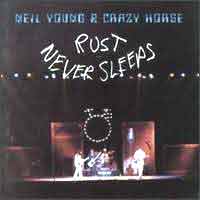 Ein Meisterwerk! Young und seine Band Crazy Horse spielen kraftvoll
und absolut auf dem Punkt, die Songs sind beeindruckend: etwa der Opener
"My My Hey Hey" und am Ende das GegenstĂĽck "Hey Hey
My My". Dazwischen solch Klassesongs wie "Pocahontas",
"Thrasher" und "Powderfinger".
Ein Meisterwerk! Young und seine Band Crazy Horse spielen kraftvoll
und absolut auf dem Punkt, die Songs sind beeindruckend: etwa der Opener
"My My Hey Hey" und am Ende das GegenstĂĽck "Hey Hey
My My". Dazwischen solch Klassesongs wie "Pocahontas",
"Thrasher" und "Powderfinger". Der Name der schottischen Band kam mir zum ersten mal unter, als ich
Mitte der 80er in der Weseler StadtbĂĽcherei in alten Ausgaben der
leider dahingeschiedenen Zeitschrift Sounds schmökerte.
In den nächsten Jahren konnte ich dann alle 4 erschienenen Alben
der Band schnell in den Grabbelisten finden, da damals kaum jemand was
mit dieser Musik anfangen konnte, die fĂĽr Rock zu punkig und fĂĽr
Gothic zu poppig war. Weder Presse, noch Massenpublikum konnte damals
ĂĽberzeugt werden. Der Begriff "LadenhĂĽter" trifft
es wohl ziemlich genau!
Der Name der schottischen Band kam mir zum ersten mal unter, als ich
Mitte der 80er in der Weseler StadtbĂĽcherei in alten Ausgaben der
leider dahingeschiedenen Zeitschrift Sounds schmökerte.
In den nächsten Jahren konnte ich dann alle 4 erschienenen Alben
der Band schnell in den Grabbelisten finden, da damals kaum jemand was
mit dieser Musik anfangen konnte, die fĂĽr Rock zu punkig und fĂĽr
Gothic zu poppig war. Weder Presse, noch Massenpublikum konnte damals
ĂĽberzeugt werden. Der Begriff "LadenhĂĽter" trifft
es wohl ziemlich genau!
 Mag
sein, dass dieser Konzertfilm nicht die Wichtigkeit von "Woodstock"
hat - fĂĽr mich ist das aber eines der besseren Triple-Livealben
mit durchweg soliden bis guten Auftritten von vielen KĂĽnstlern.
AuĂźerdem war es uns allen damals wichtig, unsere Anti-AKW-Position deutlich
zu machen.
Mag
sein, dass dieser Konzertfilm nicht die Wichtigkeit von "Woodstock"
hat - fĂĽr mich ist das aber eines der besseren Triple-Livealben
mit durchweg soliden bis guten Auftritten von vielen KĂĽnstlern.
AuĂźerdem war es uns allen damals wichtig, unsere Anti-AKW-Position deutlich
zu machen. Dieses
Livealbum war damals fĂĽr mich ein absoluter Knaller. Songs wie
"Who Pulled The Night Down", Mickey Jupp's "Shortlist"
oder das Stones-Cover "Let's Spend The Night Together" bersten
geradezu vor Spielfreude. Meines Erachtens hat Chappo im Studio nie
diese Intensität erreichen können.
Dieses
Livealbum war damals fĂĽr mich ein absoluter Knaller. Songs wie
"Who Pulled The Night Down", Mickey Jupp's "Shortlist"
oder das Stones-Cover "Let's Spend The Night Together" bersten
geradezu vor Spielfreude. Meines Erachtens hat Chappo im Studio nie
diese Intensität erreichen können. Eines der raren 70er-Kultalben des Kult-Songschreibers. Ich habe dieses
Album, ganz entgegen meinen sonstigen Gepflogenheiten, fĂĽr viel
Geld (ich glaube 35 DM) in einem Second-Hand-Laden erstanden. So weit
ich weiß hat Warner das Album immer noch nicht auf CD wiederveröffentlicht
(Kult = kein kommerzieller Erfolg?).
Eines der raren 70er-Kultalben des Kult-Songschreibers. Ich habe dieses
Album, ganz entgegen meinen sonstigen Gepflogenheiten, fĂĽr viel
Geld (ich glaube 35 DM) in einem Second-Hand-Laden erstanden. So weit
ich weiß hat Warner das Album immer noch nicht auf CD wiederveröffentlicht
(Kult = kein kommerzieller Erfolg?).